




FOR THE CITY OF DANVILLE, VIRGINIA MARCH 2024
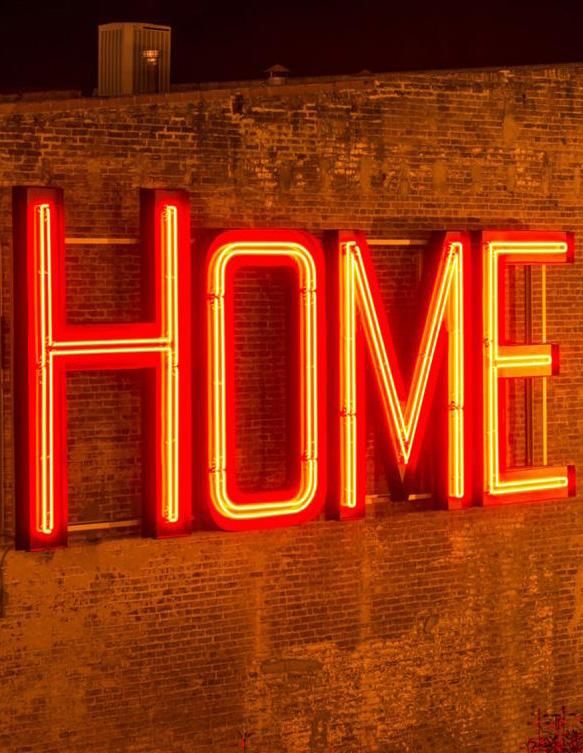

Danville’s culture is entwined with over a century of history, much of which is connected to a defunct textile industry that brought people from all over the region into our social fabric, seeking new opportunities and a better life.
A house built on Selma Avenue became a home for generations of families that had some connection to Dan River Mills. The textile company was, besides the tobacco industry, the economic driver from the 1880s until 2006. The nearly 850 houses Dan River built and rented to millhands in Schoolfield, like the home on Selma Avenue, were fashioned of brick, wood, stone, plaster, and glass. Today, these mill houses remain landmarks of what it means to create and call Danville home.
Often, the families who moved to homes were recruited off farms or out of hollers of western Virginia and North Carolina to work at the new mill in Schoolfield. While houses included electricity, they didn’t have indoor bathrooms, and water was served from an outdoor spigot. As decades unfolded, the Selma home housed many families and unrelated boarders. Inside the walls, children learned to read, write, spin tales, sing songs, listen to music, paint, and decorate. The hopes and dreams of those who lived there were shared with one another, and plans were made to stitch them into reality.
Residents who lived in Schoolfield Village rented their homes from the company until about 1950 when the City annexed the area, and Dan River Mills offered the occupants the opportunity to purchase their home.
Like many others, when they owned their home, the family on Selma Avenue added their personal touch. Indoor plumbing enabled bathrooms to be added and kitchens upgraded. Around that time, refrigerators were common and had become a canvas for childhood drawings, doodles, photographs, and other sentimental decorations. The facades of the homes were enhanced with new ornamentation, porches, and decks.
By the 1960s, deed restrictions that had prevented African Americans from owning homes in Schoolfield were rightfully deemed unconstitutional, and the neighborhood became the diverse and vibrant community that currently exists.
The story of this home in Schoolfield is one of thousands in the City that has created a uniquely Danville culture. For the entirety of human history, art, music, dance, and other creative efforts have been woven into our existence. My hope for this Arts and Culture Plan is to build upon the creative energies of people and organizations already doing this work in Danville and to be intentional about weaving into our lives more opportunities for residents and visitors to enjoy the arts and Danville’s culture.
Ken larking, city manager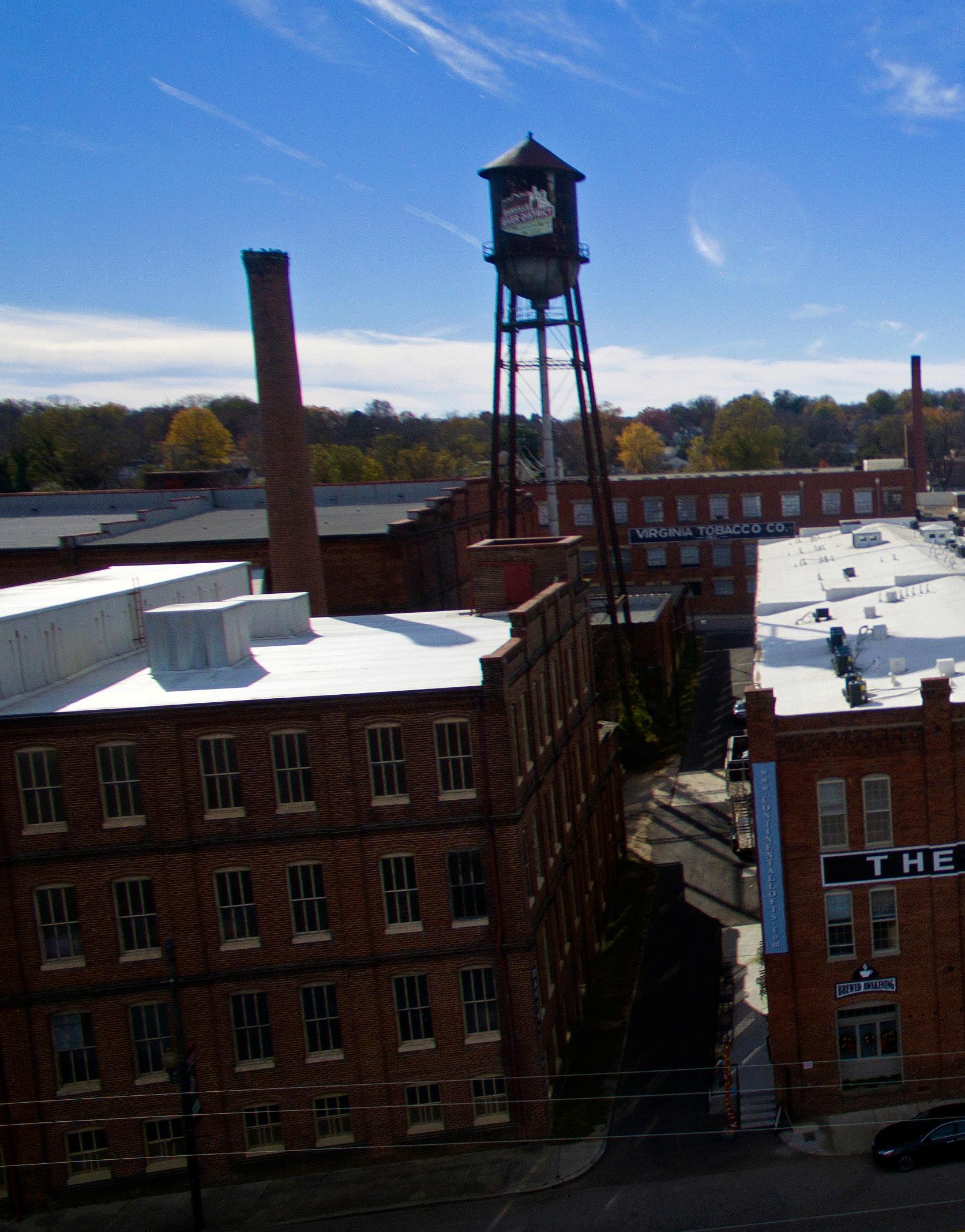
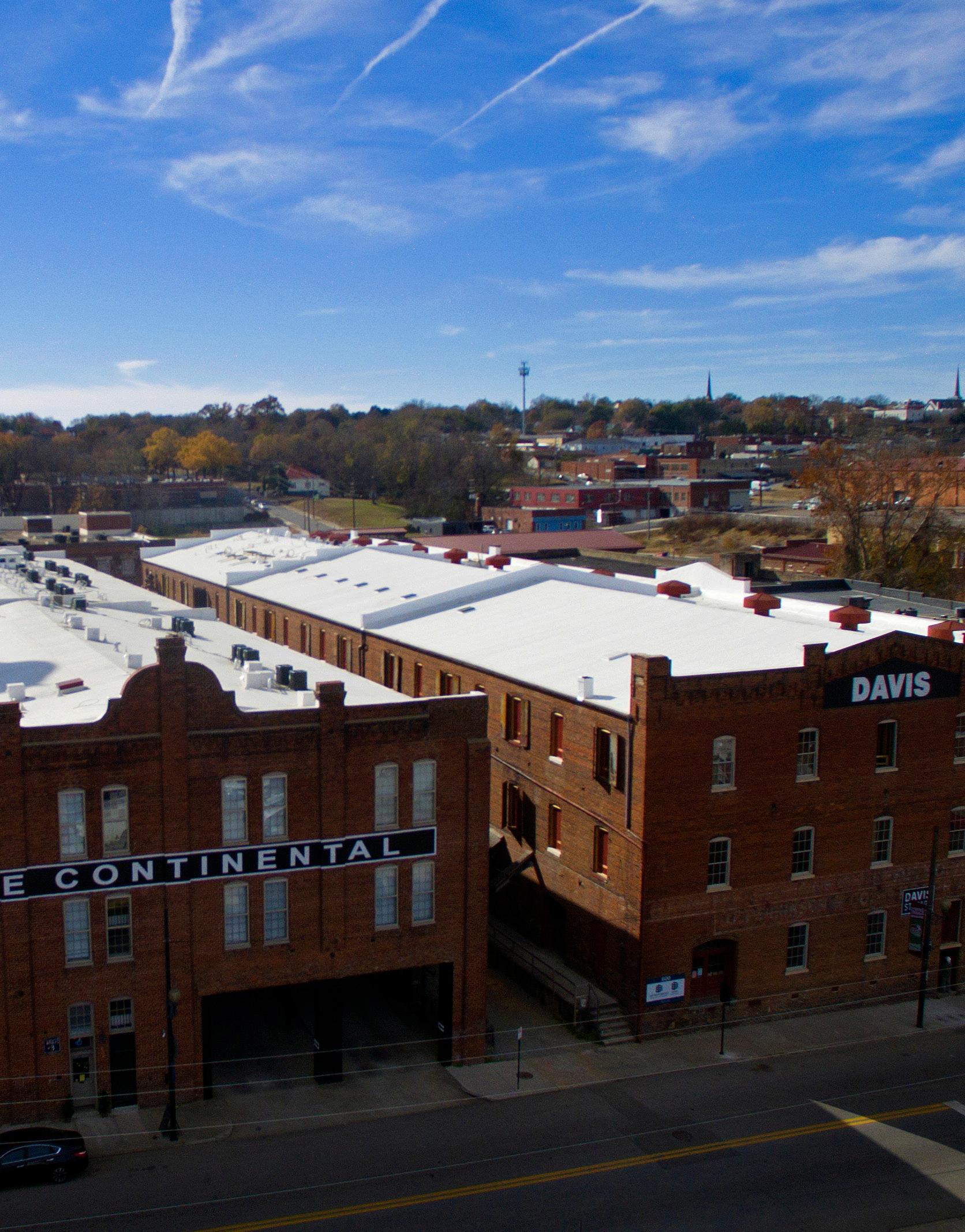
Thirty-five (35) leaders in the sector were interviewed about their vision for the Cultural Arts Program. Stakeholders included arts organization leadership, elected officials, city department heads, and local arts business owners. Focus groups were also held with arts leaders from various organizations.
Members of the public were engaged in a number of activities, including sharing their ideas for arts and culture and considering public art types and locations. The public was also given the opportunity to contribute directly to a survey, which received 181 responses that are discussed on page 8.
Throughout the process, a Steering ommittee made up of representatives from the City of Danville Parks and Recreation Department, local businesses, City of Danville Community Development Department, Danville Museum of Fine Arts and History, Danville Concert Association, River District Association, Averett University, Smokestack Theatre Company, Danville Public Schools, Danville Art League, Community Foundation of the Dan River Region, Storytelling Festival, and the City of Danville Human Resources Department were engaged in regular conversation to act as a sounding board for the planning process. Staff guided discussion on how to interact with the public, provided direction for the plan, and reacted to how best practices in the arts and culture sector might impact the city and their respective departments.
Throughout the process, case studies from U.S. communities similar to Danville were used to illustrate successful programming and policies. These best practices have been integrated into the plan objectives and strategies to illustrate successes within the sector.
survey responses
181 stakeholder interviews
13
stakeholder conversations
Overwhelmingly, residents shared they spend time in parks and nature and enjoy live music and food.
While participants shared the overall quality of arts and culture in Danville was average, there is a hunger for more—specifically, live music and theater and community arts events and festivals. Residents also expressed a desire for more food options.
Participants want to see more murals and other public art that strengthens patronage of local businesses—especially downtown.
Please share which arts and cultural activities you’ve participated in, both in and outside of Danville, within the last year:
What barriers exist to you participating in arts and cultural activities in Danville? Parks
2
3
live Music
food public art
visual art
transportation
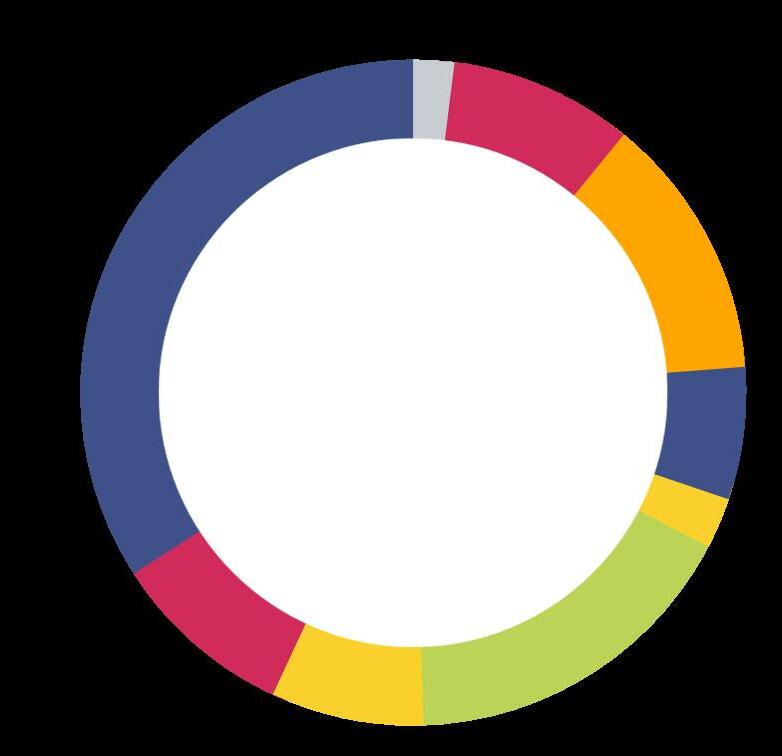
feelings of exclusion
Lack of offerings location cost time safety age appropriateness people /social networks
What cultural activities do you want more of in danville?
museums
parks and nature
spoken word 1
cultural arts, heritage, or folk art
Symphony, choir, or other ensemble history or science dance or choreography film, video, or television photography
4
WHICH COMMUNITY EVENT OFFERING IS MOST IMPORTANT TO YOU?
LITERARY ART OTHERS
FESTIVALS AND FAIRS
PERFORMING ARTS
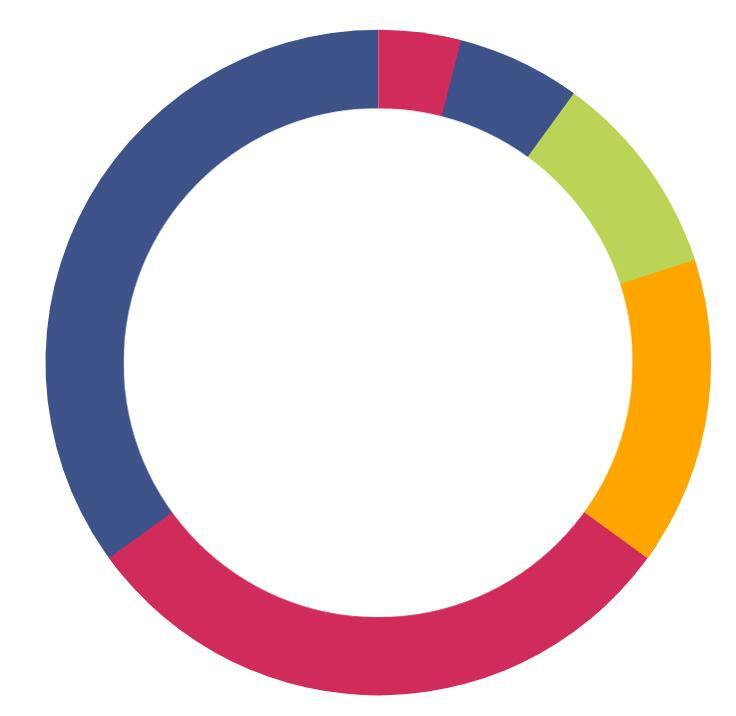
VISUAL ARTS PUBLIC ART
What TYPES OF PUBLIC ART WOULD YOU LIKE TO SEE MORE of IN DANVILLE?
5 MURALS
LIGHT INSTALLATIONS
FUNCTIONAL ART
INTERACTIVE
6
ARCHITECTURAL sculptural multimedia temporary
Where would you like to see more public art in danville?
downtown parks
within streetscapes
gateways
What impact should public art have? 7
government buildings
major intersections schools in new development
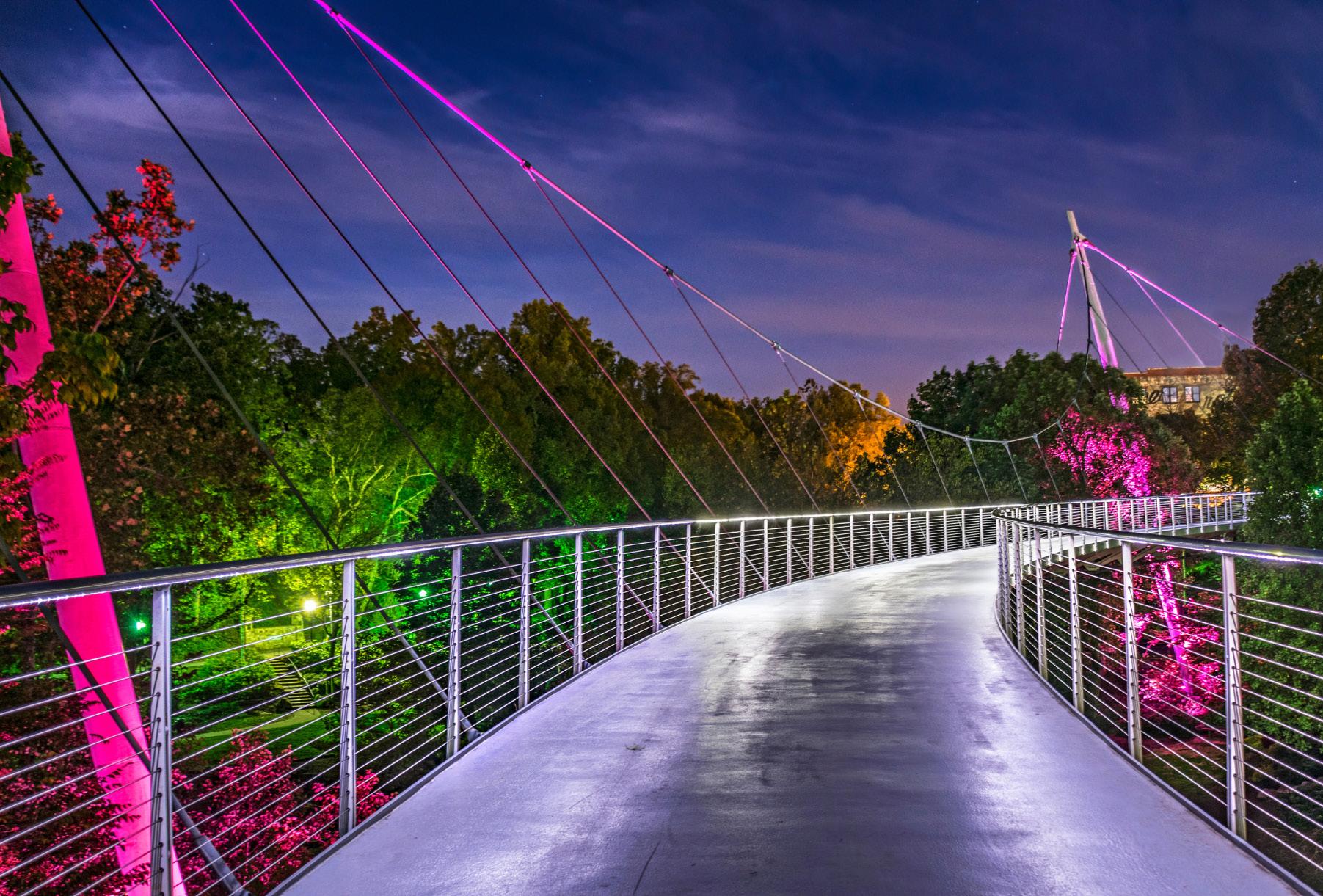
Greenville, SC has recognized the need for providing access to cultural resources through a safe, walkable, and vibrant corridor that connects key institutions and attractions. To achieve this, the city is strengthening the physical connections between culturally significant landmarks by improving streetscapes, reducing traffic, and incentivizing drivers to use the Academy Street route instead of more culturally significant pedestrian corridors. Their plan to divert traffic includes removing one traffic lane and on-street parking, widening planting strips and sidewalks, and designing crosswalks for the corridor that lead pedestrians along the safest path from Main Street to Heritage Green. The city is also discussing potential public art projects and themed directional signage to give the corridor a cohesive look. Overall, the Culture Corridor is a promising development that aims to improve the cultural fabric of Greenville, SC.
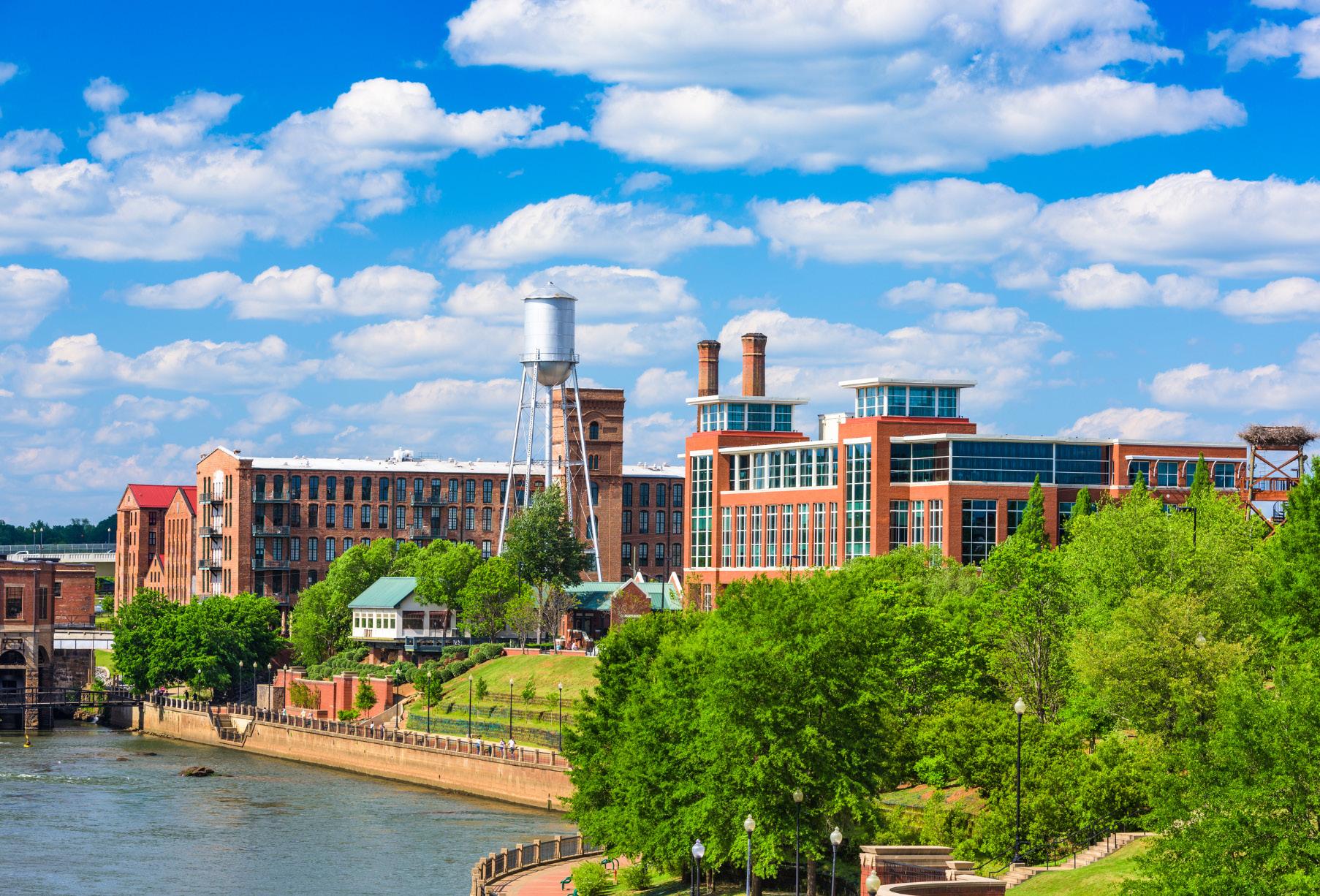
The Columbus 2025 plan was created with the goals of committing to equity and economic mobility and transforming the region by focusing on jobs, talent, and place. The most culturally significant outcomes fall under the place category.
Utilizing a Brownfield Grant provided by the EPA, the City of Columbus, Georgia revitalized four historic neighborhoods that make up the Mill District, once considered the Gateway to Columbus. Key goals of the project included transforming the 2nd Avenue Corridor to the Downtown Business District into a self-supporting live–work neighborhood with enhanced multi-modal access to the Uptown. The site includes artist studios alongside affordable housing options. In 2020, the city designated the Mill District a Purpose-Built Community, working to improve health outcomes, support mixed-use housing, and take a holistic approach to education from pre-K to post-grad.
Ultimately, the Mill District project works to turn what was once an environmental liability, with negative impacts on community health and upward-mobility outcomes, into a culturally significant and vibrant community-minded place.

Roanoke, Virginia, provides an exceptional model for leveraging public art to enrich community, identity, and vitality. Their success stems from a comprehensive Public Art Master Plan that guides the integration of art into public spaces by strategically selecting locations, themes, and artists. This initiative is sustained through a "percent for art" policy that allocates a portion of project budgets for public art, enhancing the city's aesthetics and fostering creativity.
Central to Roanoke's success is their active community engagement. They involve local residents in artist and theme selection through public meetings, surveys, and consultations, instilling a sense of ownership of and attachment to the artworks. Inclusive engagement strategies ensure the projects reflect the community's identity and gain broad support. Collaborations with schools and art organizations further engage residents, fostering pride and unity. Moreover, Roanoke's commitment extends to supporting local artists and promoting diversity. By commissioning regional artists and showcasing their work in public spaces, the city empowers artists and celebrates its multicultural heritage. These installations serve as a platform for diverse cultures and perspectives, fostering understanding and creating a more inclusive environment for all residents.

The City of Hickory has embraced a comprehensive Public Art Master Plan, which includes the implementation of a "percent for art" policy, designed to foster the integration of public art throughout the city. This policy not only promotes artistic installations but also lays the foundation for community engagement and participation in the process of introducing new public art within the city. In addition to these city-level efforts, Catawba County has introduced strategic cultural initiatives that encompass a wide array of public art, rural placemaking, creative space activation, and the enhancement of community identity.
At the county level, these strategic priorities include the establishment of libraries as prominent community destinations. It also involves the creation of mobile libraries that serve as outdoor gathering spaces and hubs for interaction among residents. The implementation of story walking paths is a creative approach to engaging the community, and placing art and sculpture within various neighborhoods serves to cultivate a unique and creative sense of identity among residents.
An analysis of the region shows that housing and rents are most affordable within a 15-minute drive of downtown Danville, while the total population within a 2.5-hour drive is nearly 10 million people (pulling from neighboring population centers of Lynchburg, Greensboro, Roanoke, Durham, and Raleigh). This makes Danville an ideal location for artists to establish themselves within the regional market.
Analyzing these trends in reverse, it becomes clear that Danville is uniquely positioned as a central location to capture a large market of individuals looking for arts and culture experiences outside of the communities in which they live and work. Moving from Danville to other areas of Virginia, population levels and median and average disposable incomes increase. Danville can capitalize on the tourism influx from Caesars Virginia to draw these higher-income individuals toward downtown and the proposed Culture District.
A further analysis of the region reveals that a significant population of 247,432 to the northeast of Danville is more than an hour's drive to the Lynchburg, Greensboro, Roanoke and Durham population centers, but less than an hour's drive to Danville, making this a possible catchment market for Danville arts and culture.
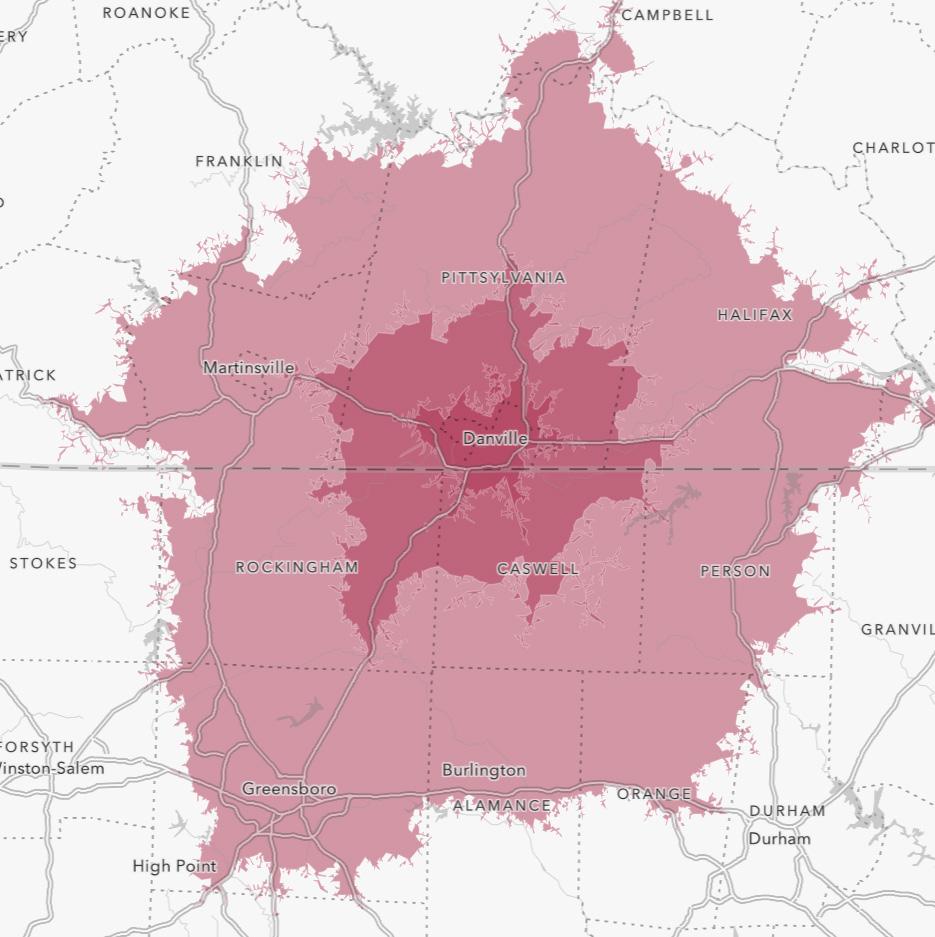

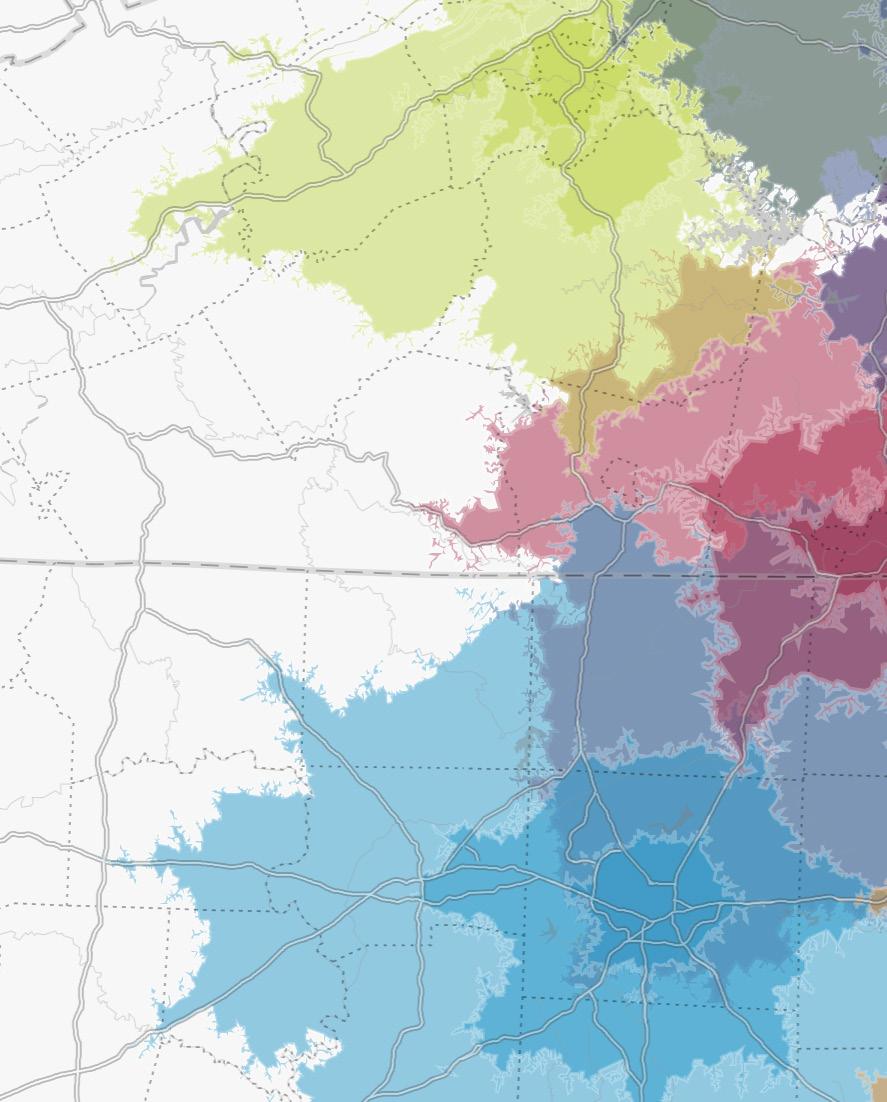
lynchburg
15 min 30 min
60 min
Danville
15 min 30 min
60 min min
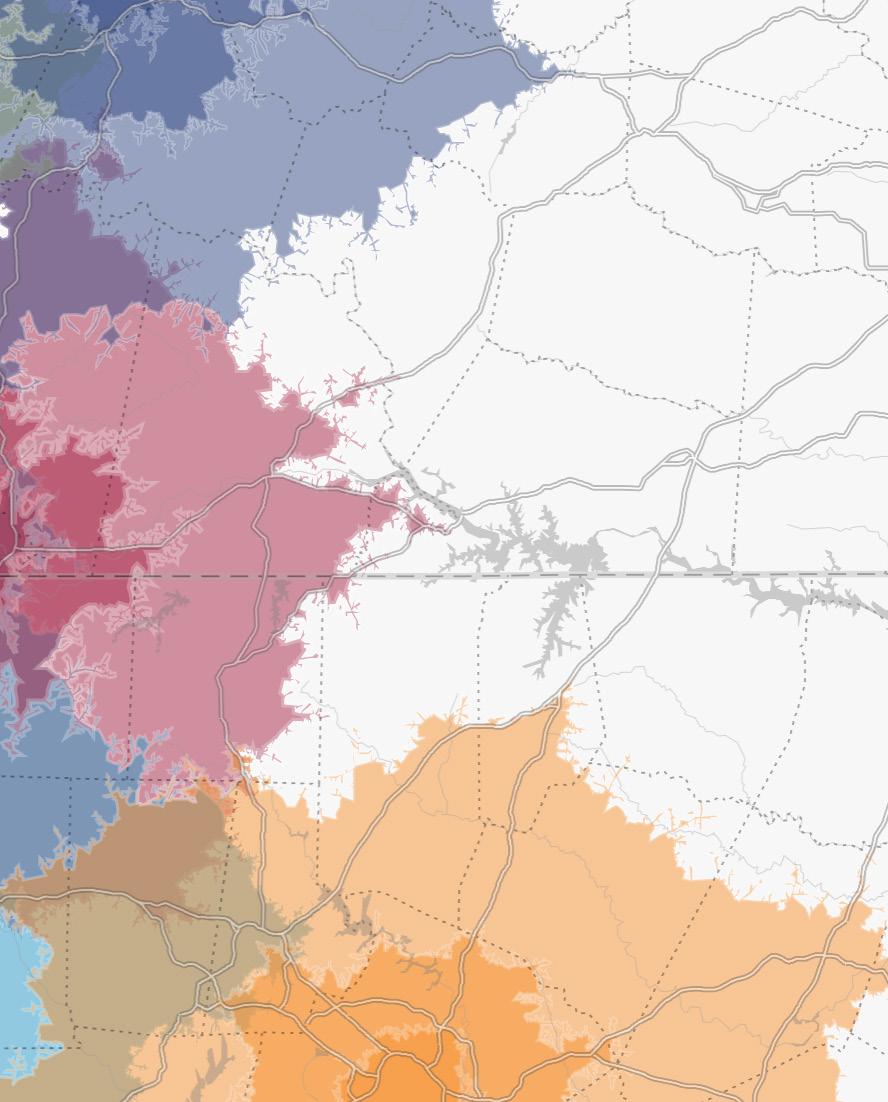
60 min
The previously referenced data points were pulled from this map. The area mainly comprising the northeast of Danville, in which there are no overlapping drive sheds, is home to nearly 250,000 people.
Through the implementation of iconic public art and cultural experiences, Danville can capitalize on this market and the wider drive sheds in the outskirts of the shown cities to draw visitors and artists from the region.

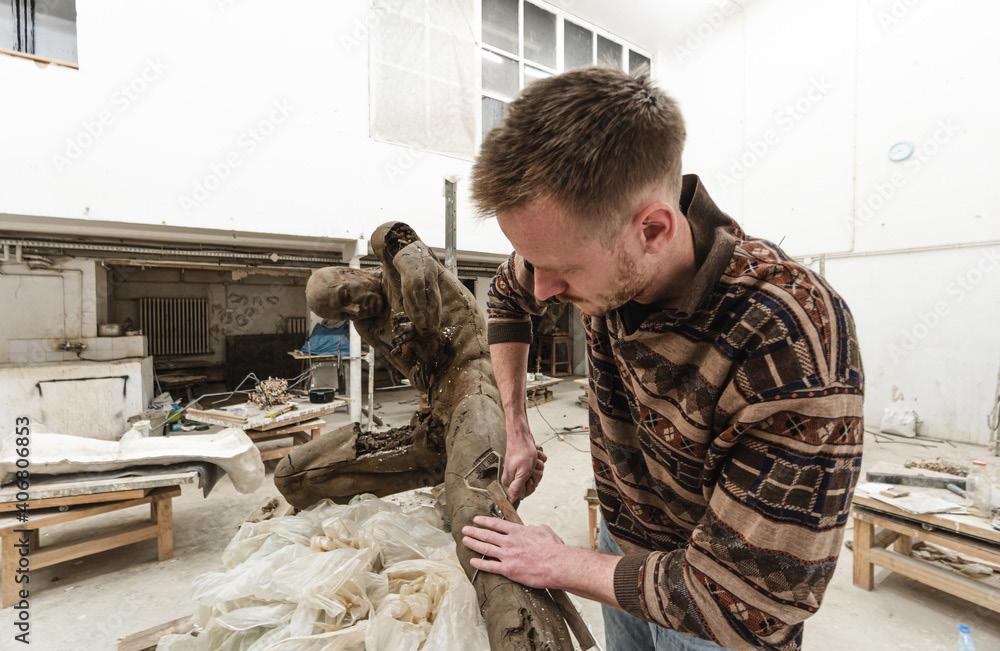
The Creative, whether an artist, artisan, musician, performer or a little of everything, would be pleased to see the opportunities available to them by living or working in Danville as the city builds its support of the local arts and culture identity. With access to affordable rents for properties to both live and work centralized within a regional economy of over 10 million, honing their practice in Danville just makes sense.

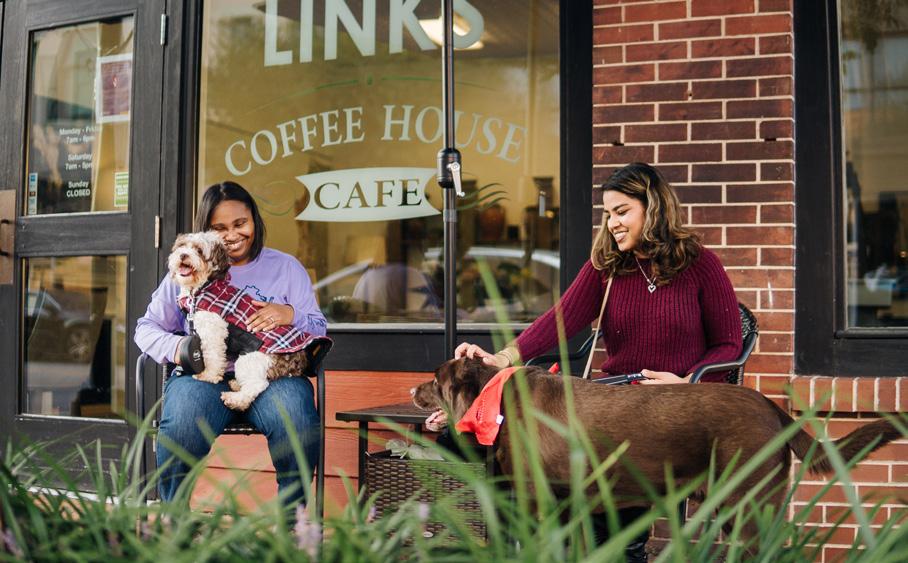
The Local is a resident who has always seen the potential in Danville. Through the implementation of this plan, they will see their local arts and culture identity underscored with funding, transformed spaces, and support directed to areas in their community that promote cultural experiences. What should unfold is the physical representation of shared community ideals and themes.


Weekenders throughout the region who love to get away would find that Danville is great place to do so. They might initially come for the casino but stay for the recreation, the charming River District, and nightlife, discovering along the way arts and culture experiences such as the sculpture walk or a show at Smokestack Theater. If they're lucky, they will also be able to experience all the new arts and culture experiences that enrich the community as part of this plan.


The Neighborhood Advocate would be pleased that among the tools created through this plan is a mechanism for placing art directly in neighborhoods through the Neighborhood Placemaking Grant. This program will allow community members to apply for funding and work with the proposed Public Art Coordinator to create specific installations that represent that community's identity within Danville.

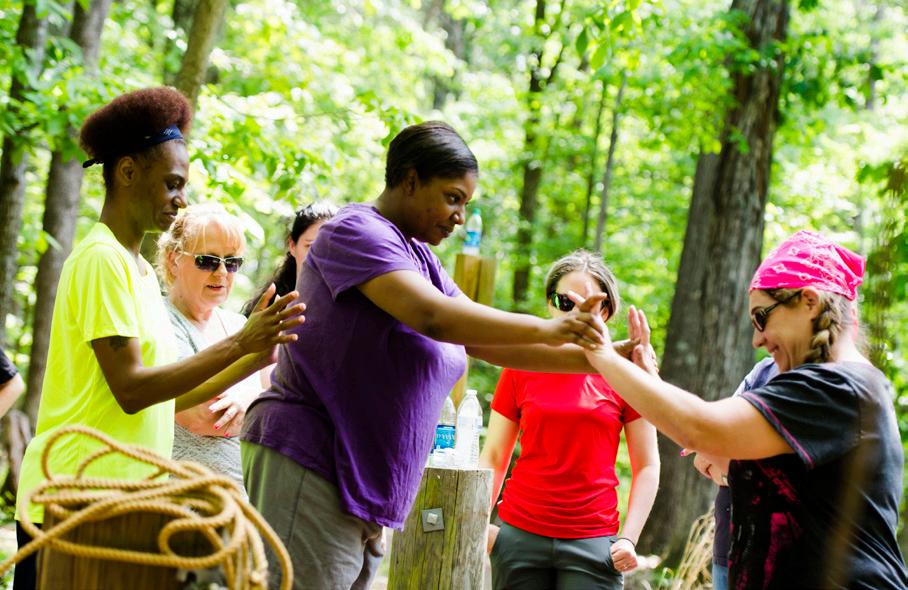
The Explorer might be first coming to Danville for the sculpture walk, the burgeoning food scene, or the growing arts identity. The proposed Culture District would be a great place for them to start, as home to the Danville Museum of Fine Art and a variety of venues with programmable space to house experiences. They would likely funnel into the River District from there, where they could support local artists and artisans in their crafts.

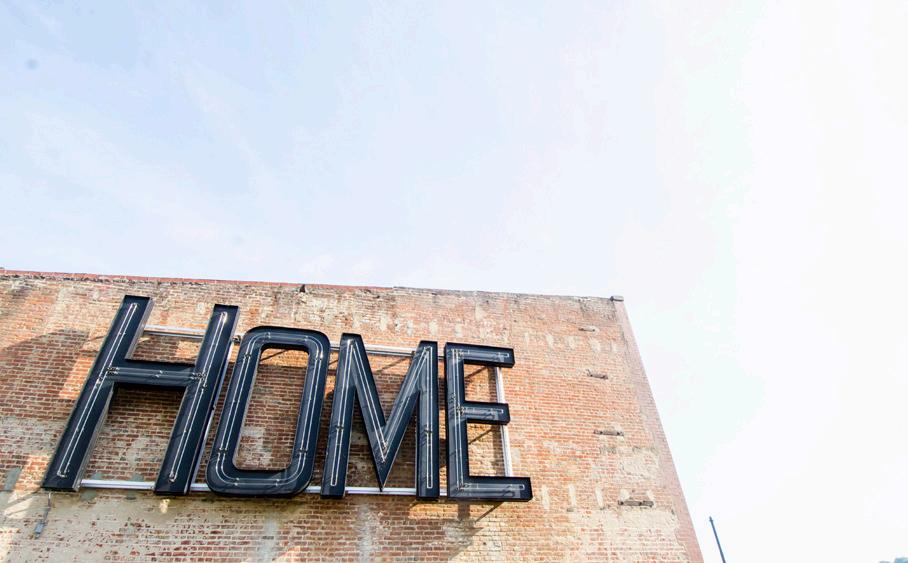
The Arts Advocate is someone who sees the wealth of connections available locally and regionally and looks to reach across organizations and interests to facilitate excellent and compelling arts and culture experiences for residents and visitors alike. These individuals would look to utilize the strength of a growing local arts economy and network to achieve their own organizations' goals, while lending their own insights to strengthen neighboring organizations and interest groups.
THE RIVERWALK DAN RIVER PUBLIC TRAIL
DAN DANIEL MEMORIAL PARK RIVER PARK DR PUBLIC SPORTS ANGLERS PARK

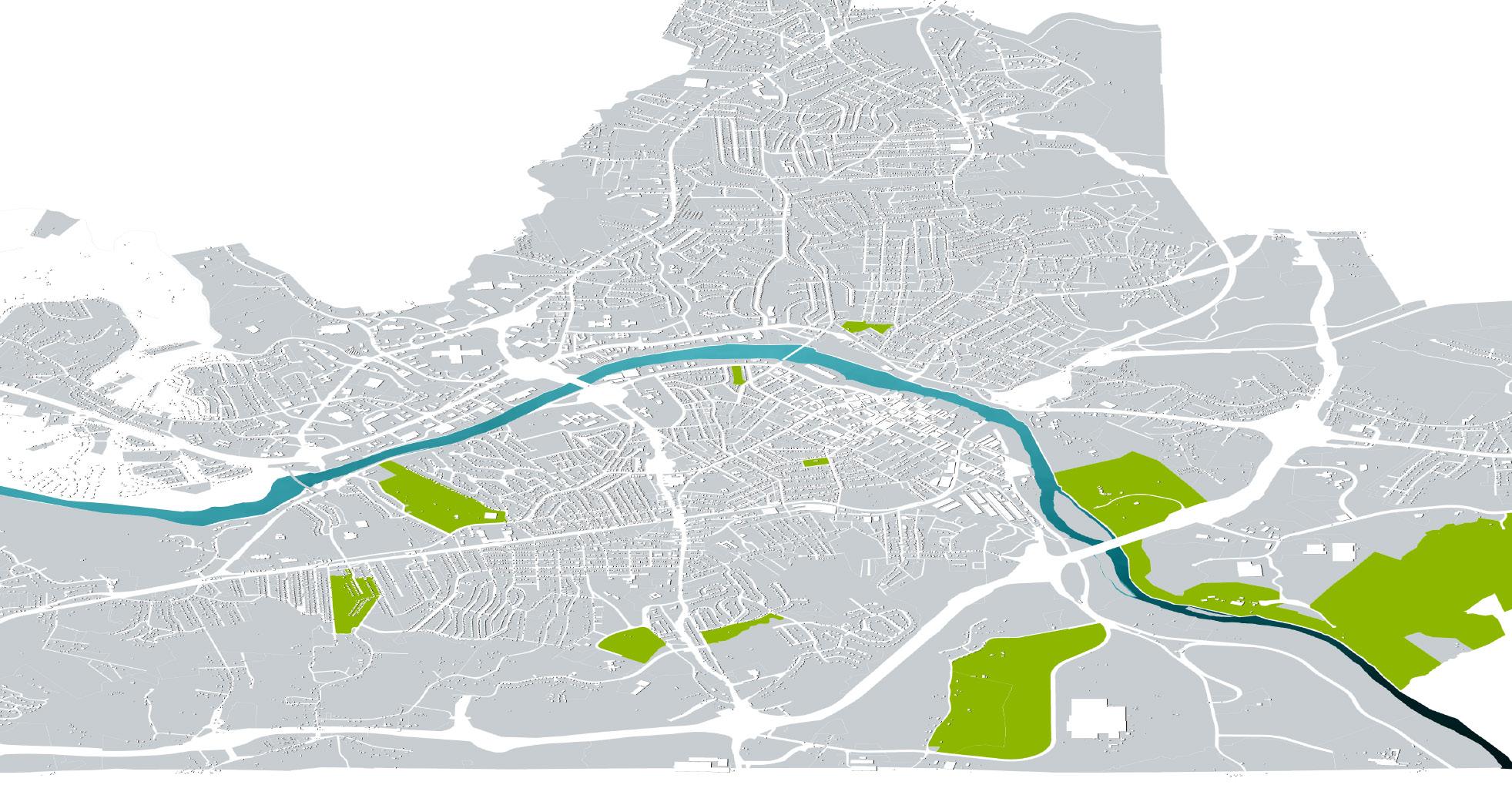

*Data provided is only a snapshot at the time of plan recording, and may not be a comprehensive inventory of all existing regional assets. Inventory is provided in no particular order. Capacity is provided as 0–499 people, 500–1,999 people, 2,000–4,999 people, 5,000–9,999 people, and 10,000+ people. Parks capacities are best approximations.

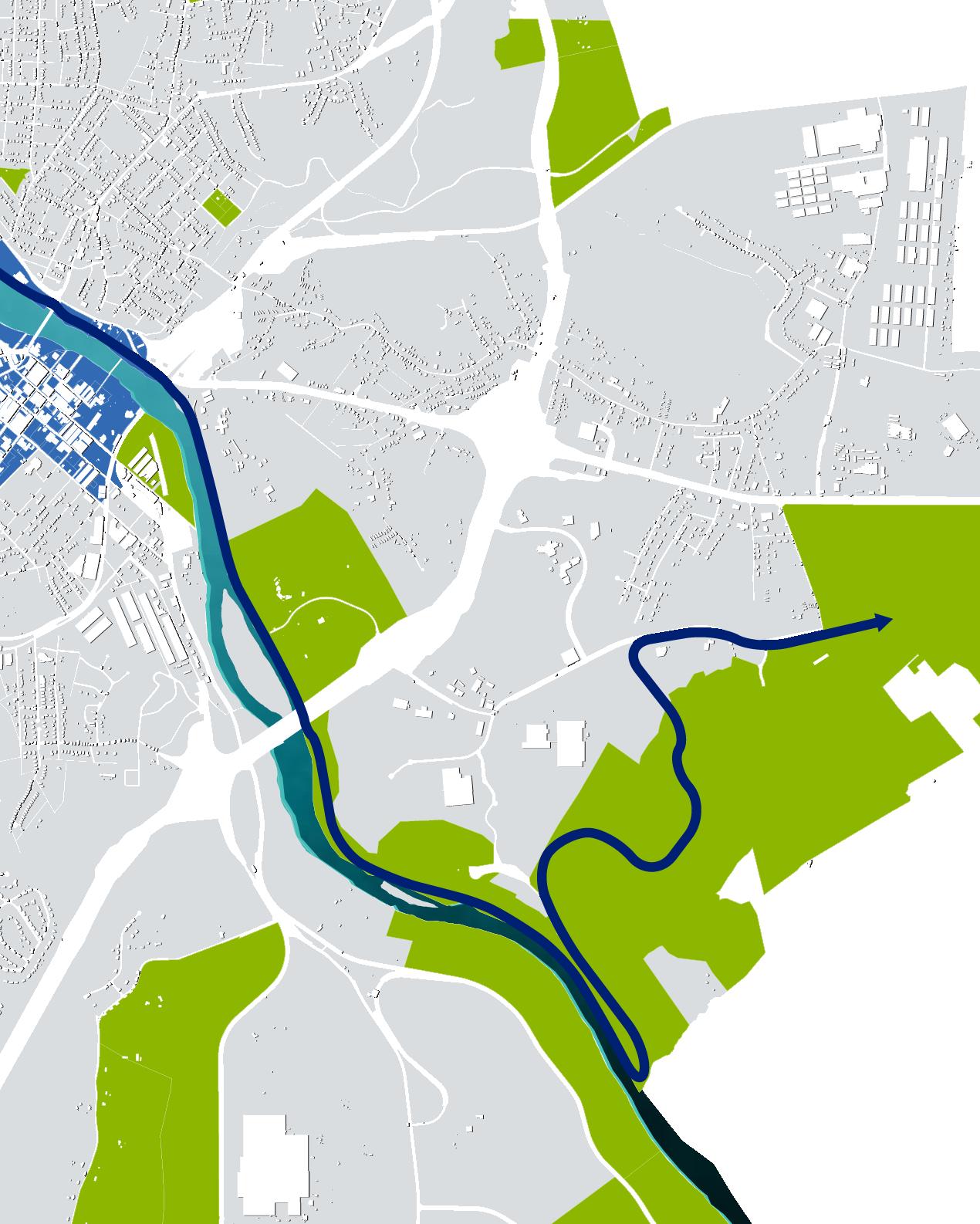
Existing and planned city districts such as the River District, the Schoolfield District, the Historic District, and the Riverwalk were referenced in the creation of the proposed Culture District. The proposed district leverages existing designations, key corridors, and existing arts and culture facilities and organizations to make the biggest impact to the residents and visitors of Danville.
Old West End Historic District
River District
Schoolfield District
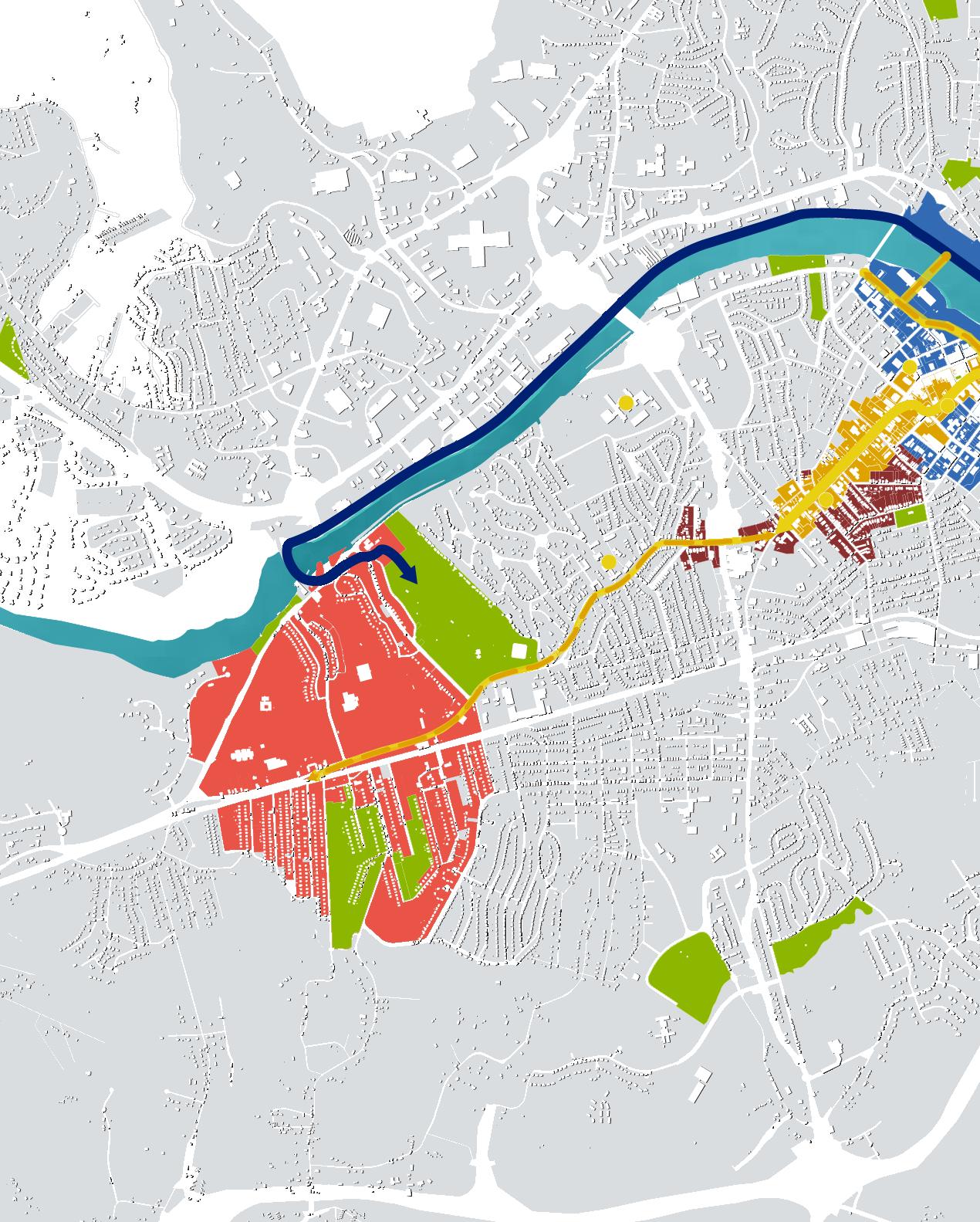

Shown here in gold is the proposed Culture District, overlaid against Danville's existing districts and key corridors.
Proposed Culture Corridor & District
Old West End Historic District
River District
Schoolfield District
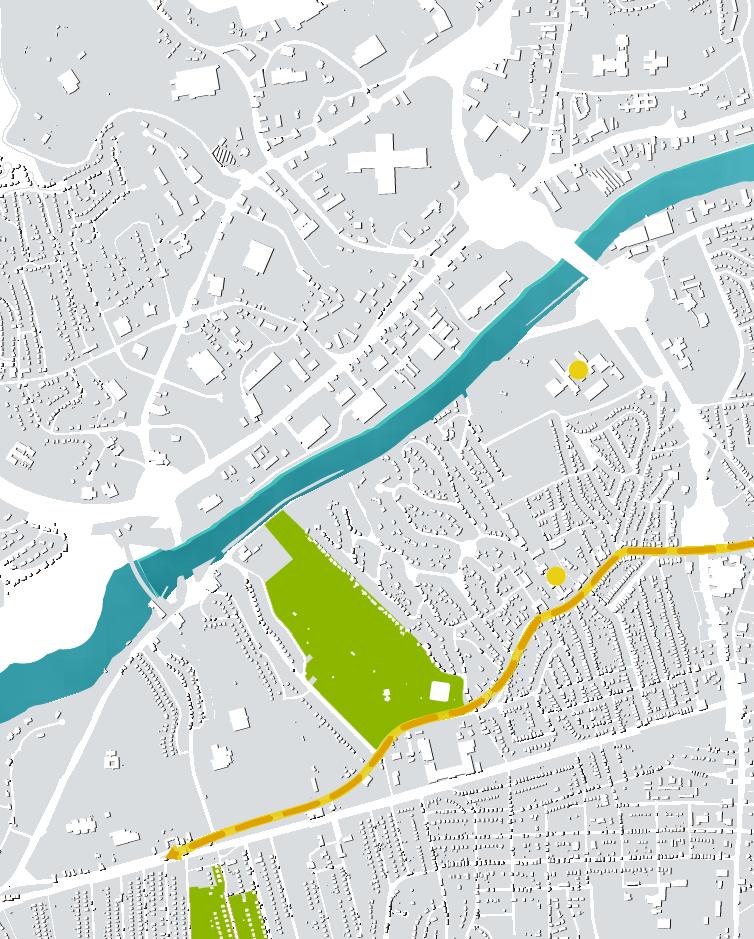
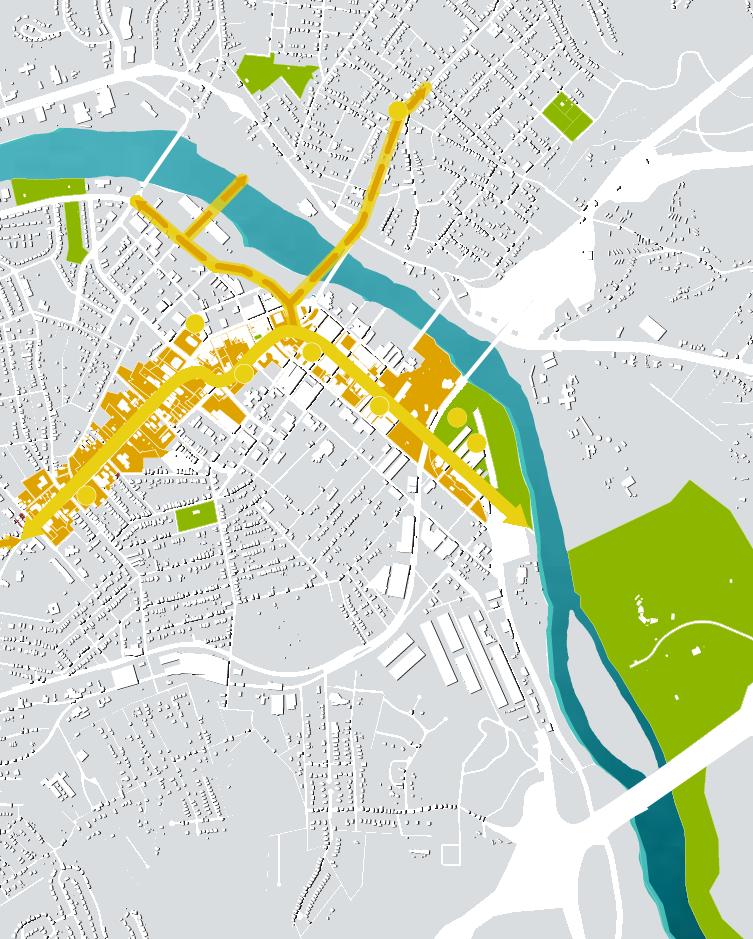
Shown here is the proposed Culture District and the key corridors that feed it. Proposed Culture Corridor & District
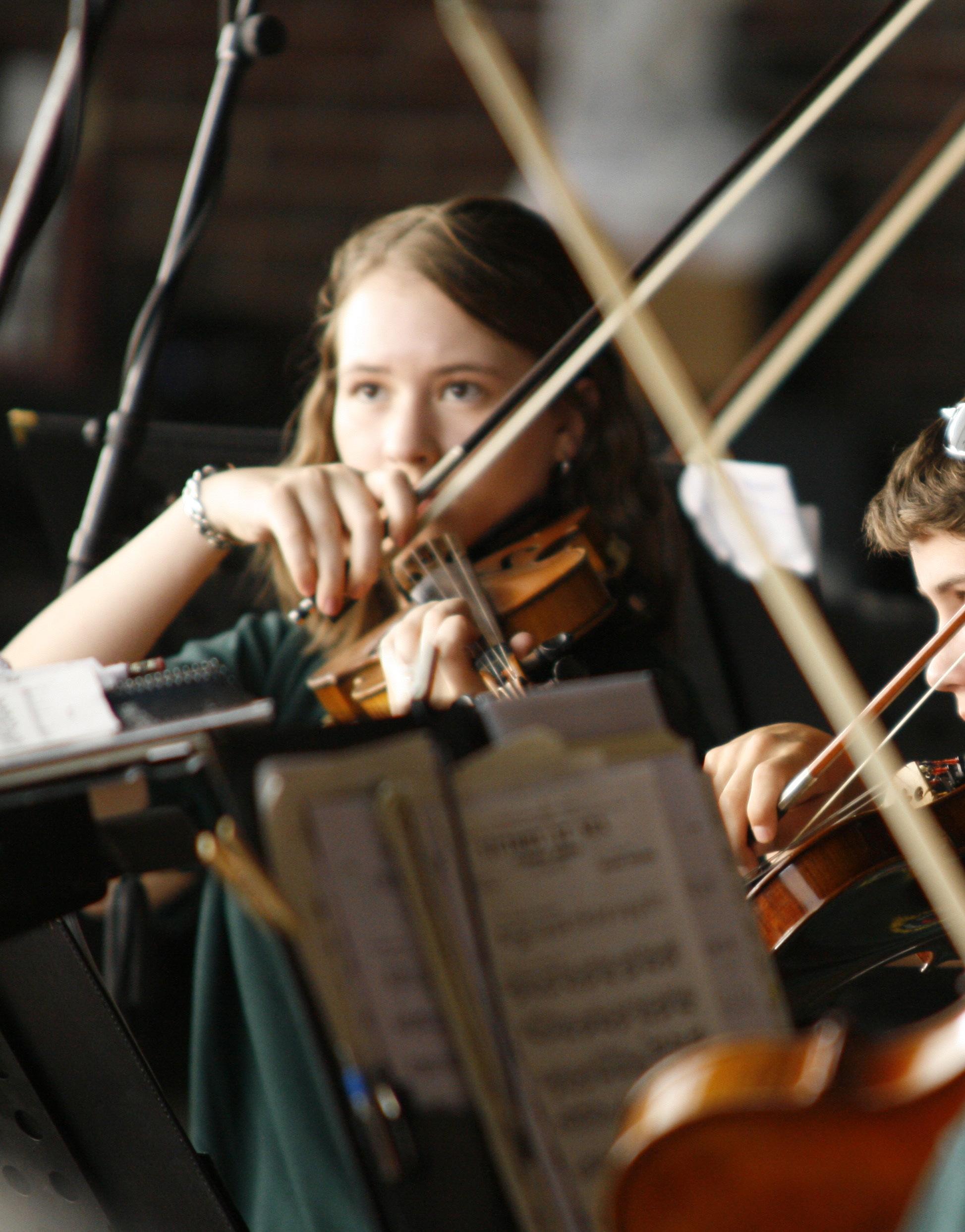

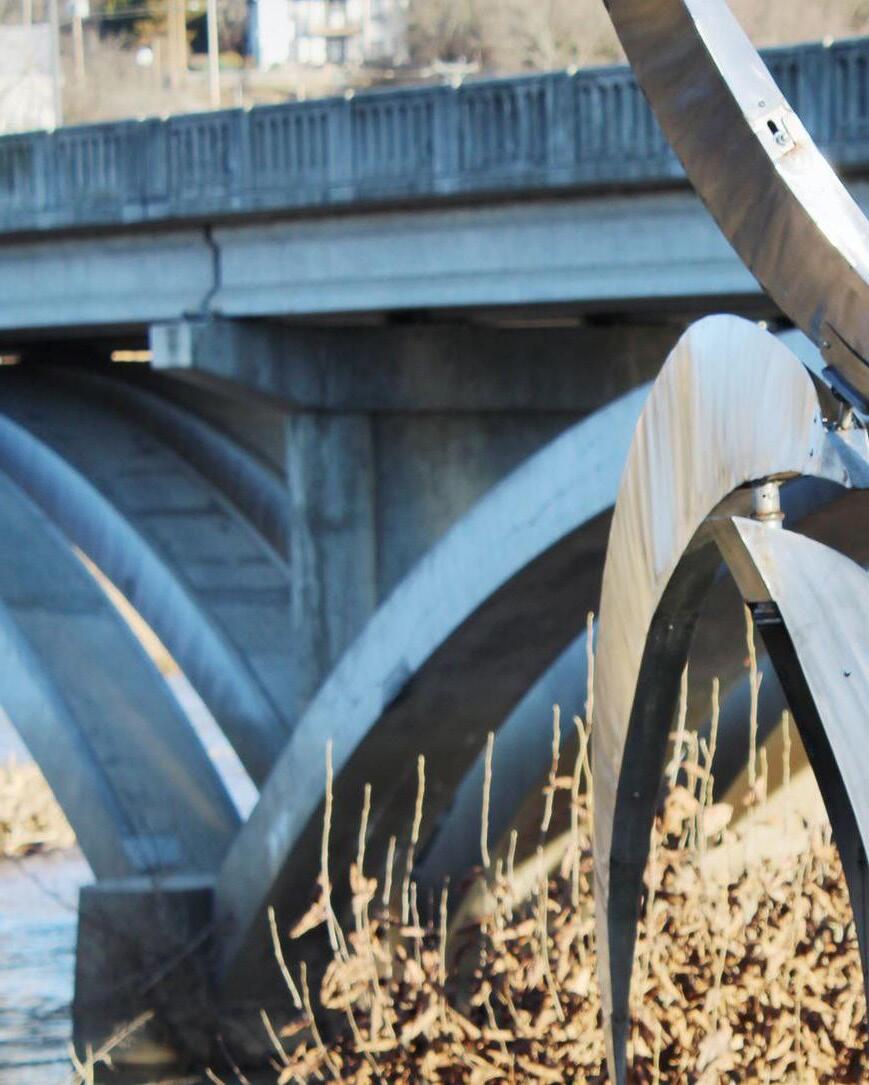
Danville has enacted its informal commitment to public art through various programs for years, for example by curating the Danville Art Trail, an 18-month exhibit of outdoor sculpture within a 1-mile radius of the JTI Fountain in the River District. Due to the success of the Art Trail, the community overwhelmingly supports an increase in investment in public art and a geographic expansion of artwork placement. Residents shared their desire to move to the next level in their city’s commitment to public art with the formation of a formal Public Art Program. This investment would expand the city’s commitment geographically, as well as create meaningful public art projects throughout the city. Several types of public art are mentioned throughout this document as being ideal for Danville; they are described in the following section.
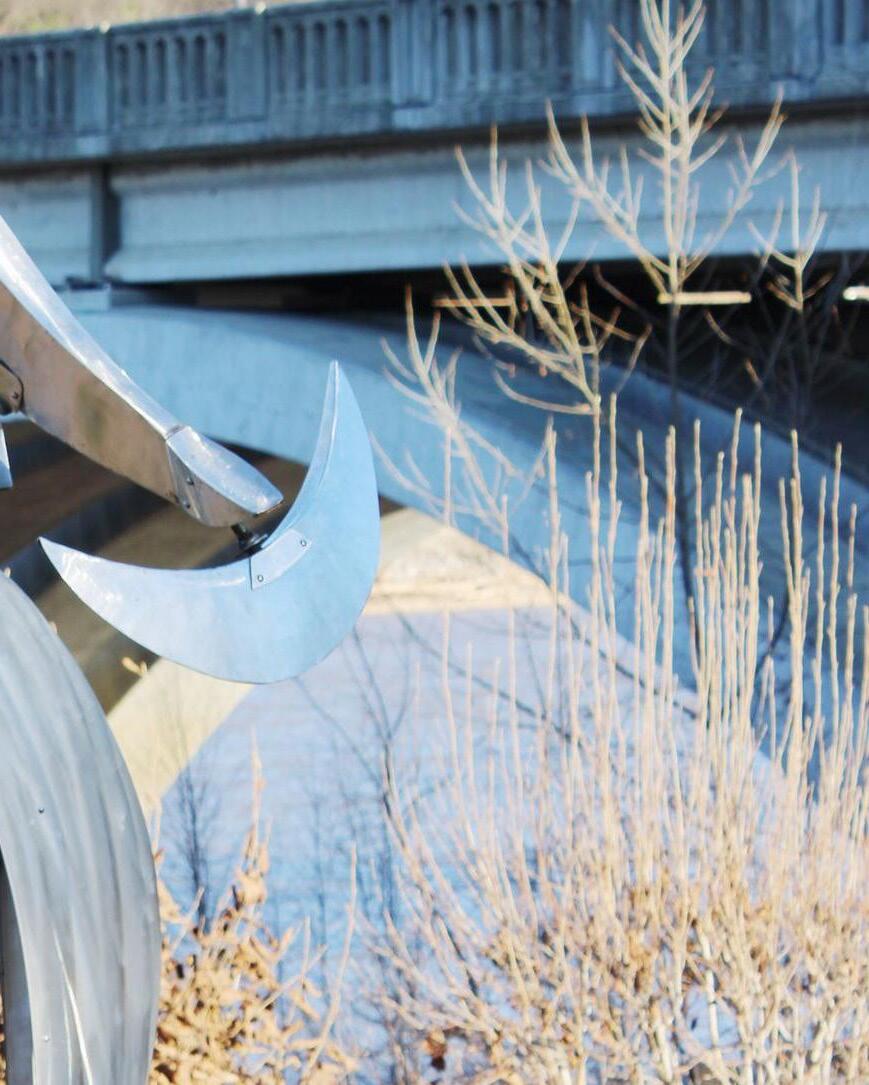

Functional art is ordinary infrastructure that has been reimagined and designed by an artist. Integrating unique designs into infrastructure may be an affordable and efficient way to create a major visual impact. Some possible options for functional art installations include bike racks, benches, play equipment, medians, subdivision walls, trash cans, transit stops, storm drains, manholes, monument signage, sidewalk treatments and more.
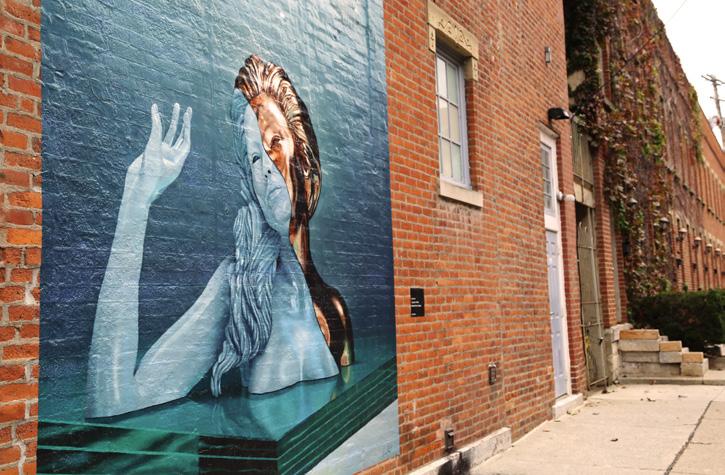
Murals are large-scale, two-dimensional compositions that can be: 1) painted onto the surface 2) graphic reproductions printed onto vinyl that is adhered to a surface, or 3) painted onto a panel that is affixed to the building. Environmental conditions, artwork display duration, artist ability, timeline, and budget are all considerations for which mural application style is suitable for a project. Ephemeral works such as murals allow many artists to be engaged over a short period of time rather than a few artists over a long period of time.

Mosaics come in many shapes and sizes and include glass or ceramics. The relative flexibility of the application of mosaics responds well to many art contexts. Mosaics can be inlaid for flooring or wall elements, or they may be a component of a sculpture. Terrazzo floors can be considered as a kind of mosaic installation.

Fiber art is any kind of artwork that uses natural or synthetic fiber materials as the primary component of its overall composition. Fiber art can take the form of wall hangings, tree wraps, suspended sculptures, and beyond. Examples of fiber materials include fabric, yarn, polyurethane materials (like tarp), and mesh.
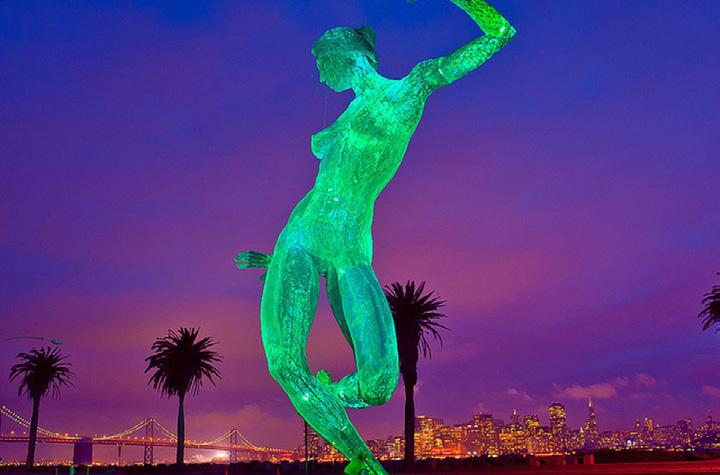
Artists use lighting in creative and interesting ways in order to manipulate the built environment with limited physical impacts. Light installations may be used on existing buildings, in parks on substantial landscape features, or as part of a larger installation of sculpture. They may be especially impactful when used in infrastructure projects.
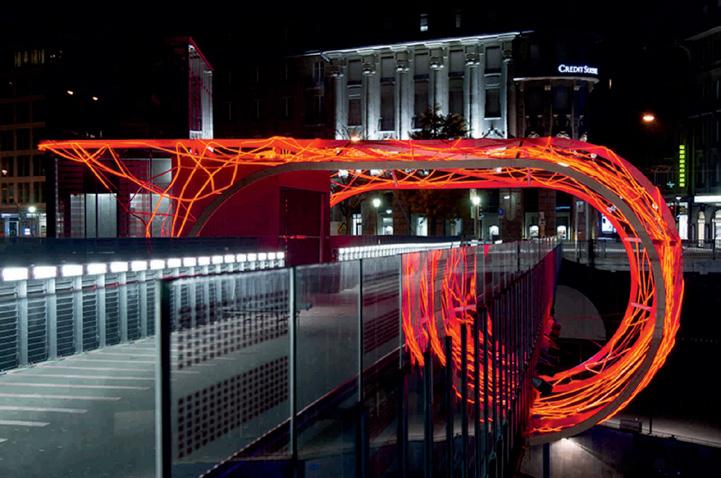
Multimedia installations may combine many other art types in ways that expand the imagination. Video, lighting, sculpture, murals, and more can be combined to make multimedia installations. Multimedia installations are especially useful for temporary or pop-up installations.

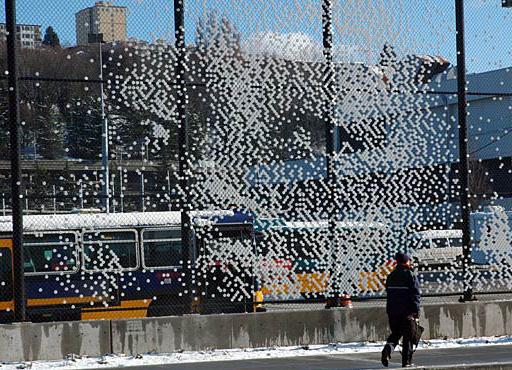
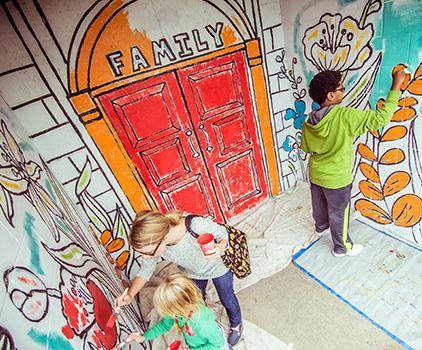
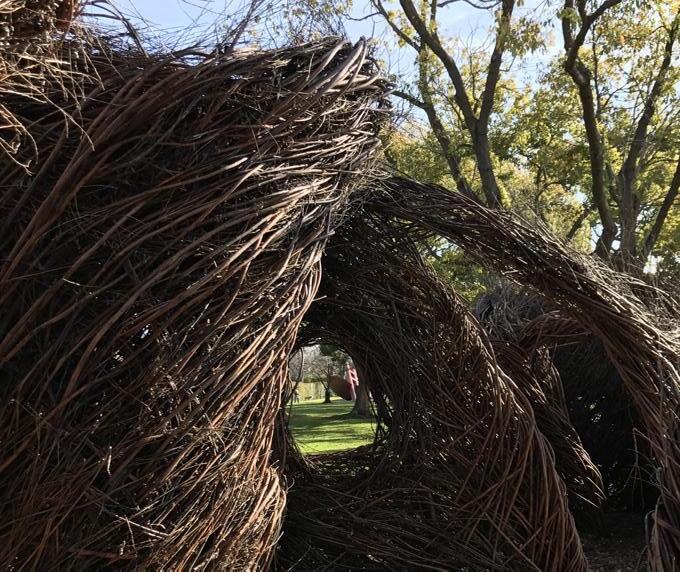
Dance, theater, spoken word, and other types of public performances are ideal to stage in public spaces or alongside public art in Danville. Such performances have a particular relevance when staged at the unveiling of public artworks.
Though temporary art is not intended to live for a generation, it can have a lasting impact on a community by creating a sense of surprise and joy in unexpected places. Some ideal locations for temporary installations include construction sites, sidewalks, alleyways, parks, and temporarily empty spaces and storefronts. Temporary art can be done inexpensively and easily, provide opportunity for additional artist engagement, and deliver huge impact for a relatively small investment.
Participatory art involves the community or a public group in the process of art-making, as guided by an artist. Artwork that emerges from a participatory experience enhances and celebrates its process and participants over short or long periods of time. Collaborative art pieces engage people to generate feelings of community pride and ownership.
Site-specific art is artwork that is aesthetically, conceptually, and/or thematically connected to the unique circumstances, culture, history, and environment of a particular site. Site-specific art can take many forms, and may be permanent or temporary. In this approach to art-making, artists extensively research the place, site, or area where the site-specific artwork will be placed. Site-specific art tells the story of a place through its surroundings, enriching the experience of the place itself.
The planning process asked broad questions of participants in order to cast a sweeping community vision for arts and culture in Danville. This vision, developed based on survey results and conversations with stakeholders and the public, is one that is big and bold, and will prepare Danville to become a city known for embracing and celebrating its unique culture.
1 2 3 4 a CREATIVE identity.
The public supports Danville becoming a cultural destination within the region and wants creativity to be synonymous with its identity.
A place with Strong Facilities for Creation & Celebration.
Spaces should be dedicated to existing cultural arts in the city, as well as new culture creation.
A Culture OF Creation Evidenced by the Built Environment.
The public has a significant interest in seeing physical manifestations of cultural activity throughout the city.
A Regional Destination for Arts and Culture.
Danville is well positioned to become a regional hub for arts and culture, as the city is centrally located in a large region. Investment in arts and culture will affirm Danville as a cultural destination.
Danville is a regional hub for arts and culture because of its investment in public art, cultural facilities, community arts, and support of local cultural organizations.
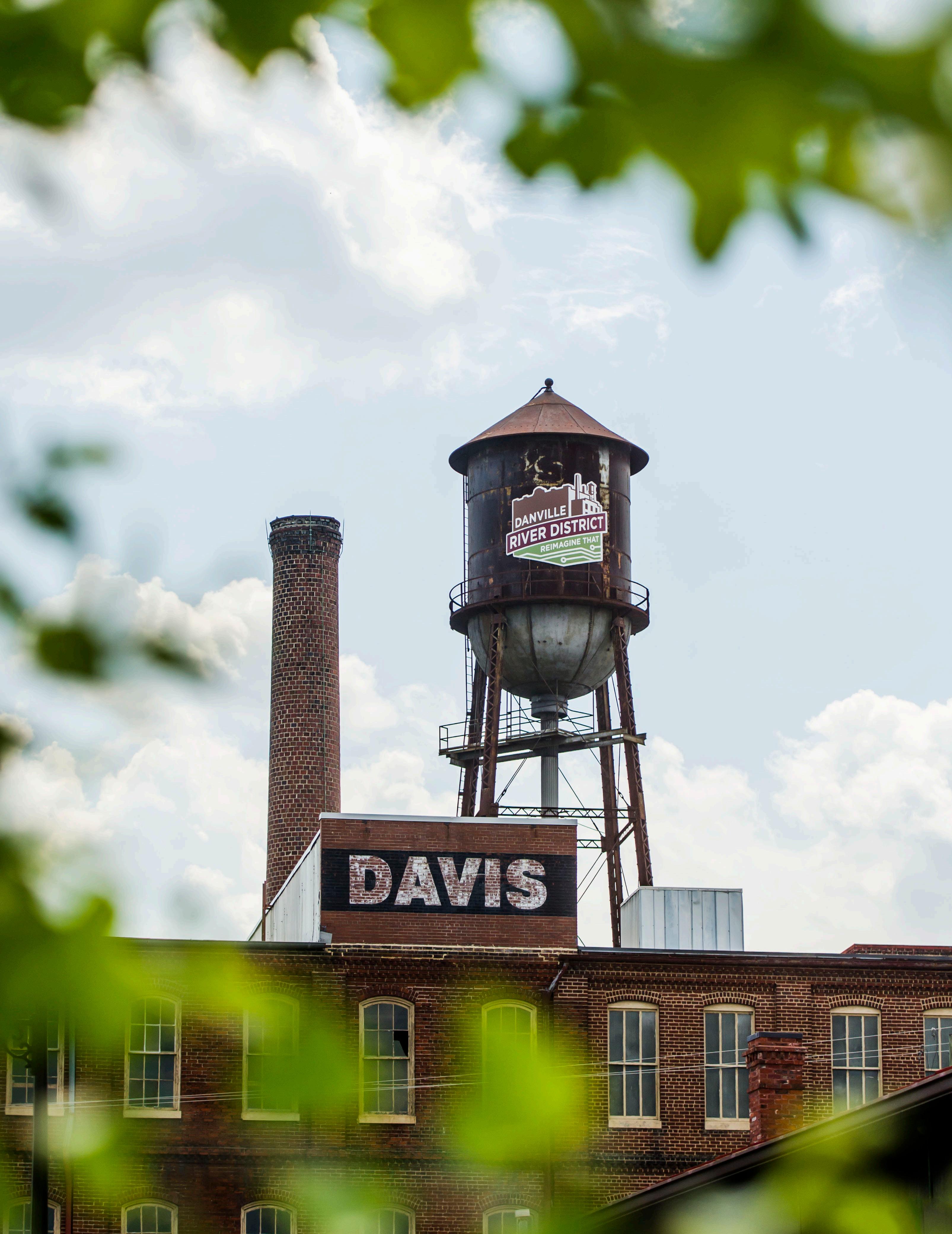
1 2
Delivering high-quality community arts for Danville residents
Developing Danville as a destination for cultural tourism
3
Increasing representation in the civic landscape
SUPPORTING COMMUNITY-DRIVEN ARTS
Investing in iconic public art & programming
Ensure long-term program success
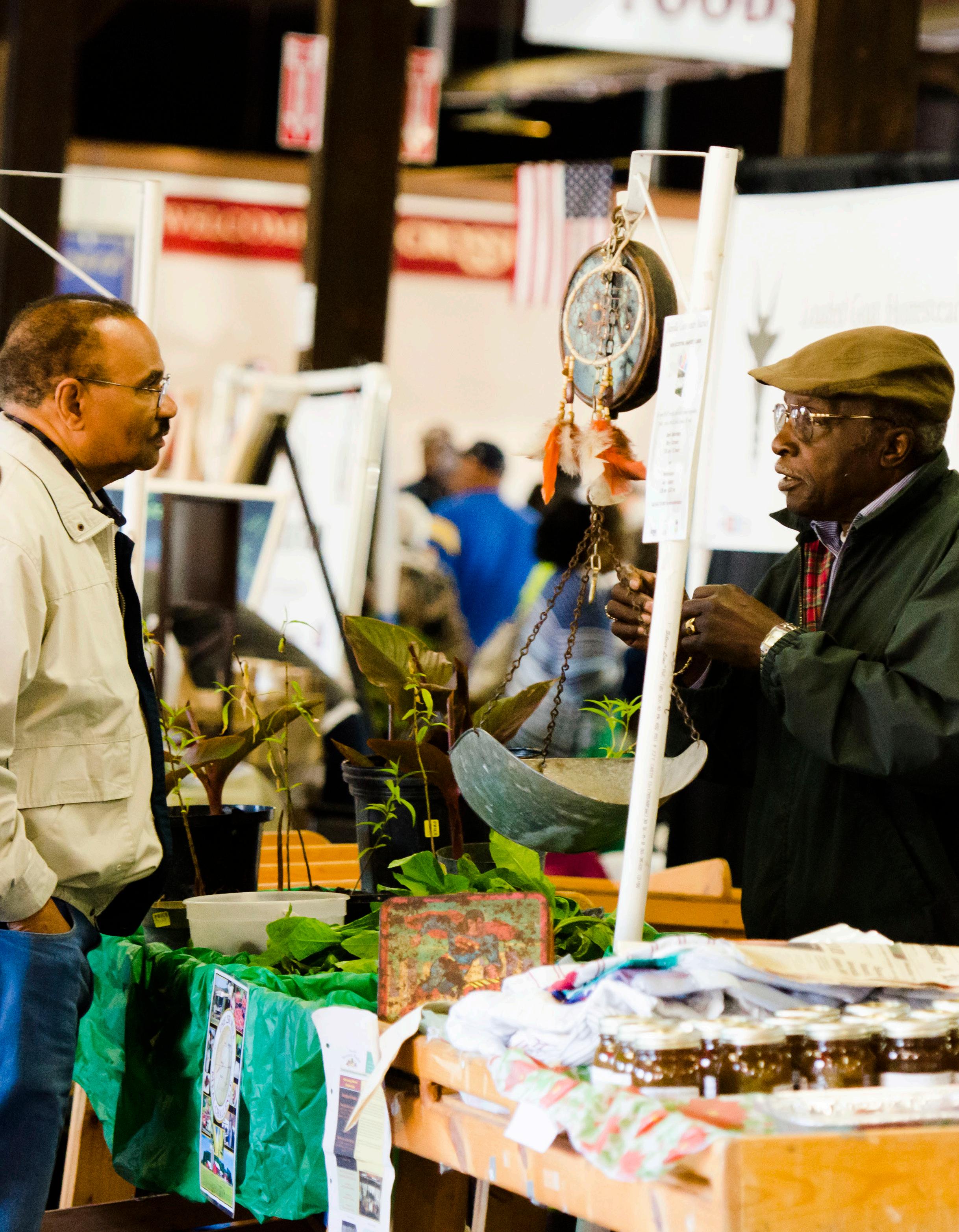

When implemented, the following five strategies will realize Danville's vision of being a city of culture. Each strategy is accompanied by action items to support it, a timeframe for implementation, staffing requirements, relative cost, case studies, and target audience (as appropriate).

1—Establish the Cultural Arts Program through the creation of a new division, public participation, strong leadership, and sustainable funding.
2—Formally establish the Danville Public Art Program through the adoption of sound policy and administrative processes.
3—Invest in iconic public art experiences throughout Danville.
4—Provide cultural facilities for Danville residents to create and consume cultural events and programming.
5—Provide meaningful cultural experiences for Danville residents throughout the city.
Immediate
1–2 years
3–5 years
5+ years cost
$—$0–$250,000 $$—$250,000–$1 million $$$—$1 million+ relative impact
Low—Strategies that are essential to the long-term health and sustainability of Danville’s cultural sector, but may go unnoticed by the community at large
Medium—Strategies that improve residents' experience at the individual level
High—Strategies that fill a significant gap in the market; set the foundation for new programs, projects, or practices; or directly shift the general perception of Danville as an arts and cultural community
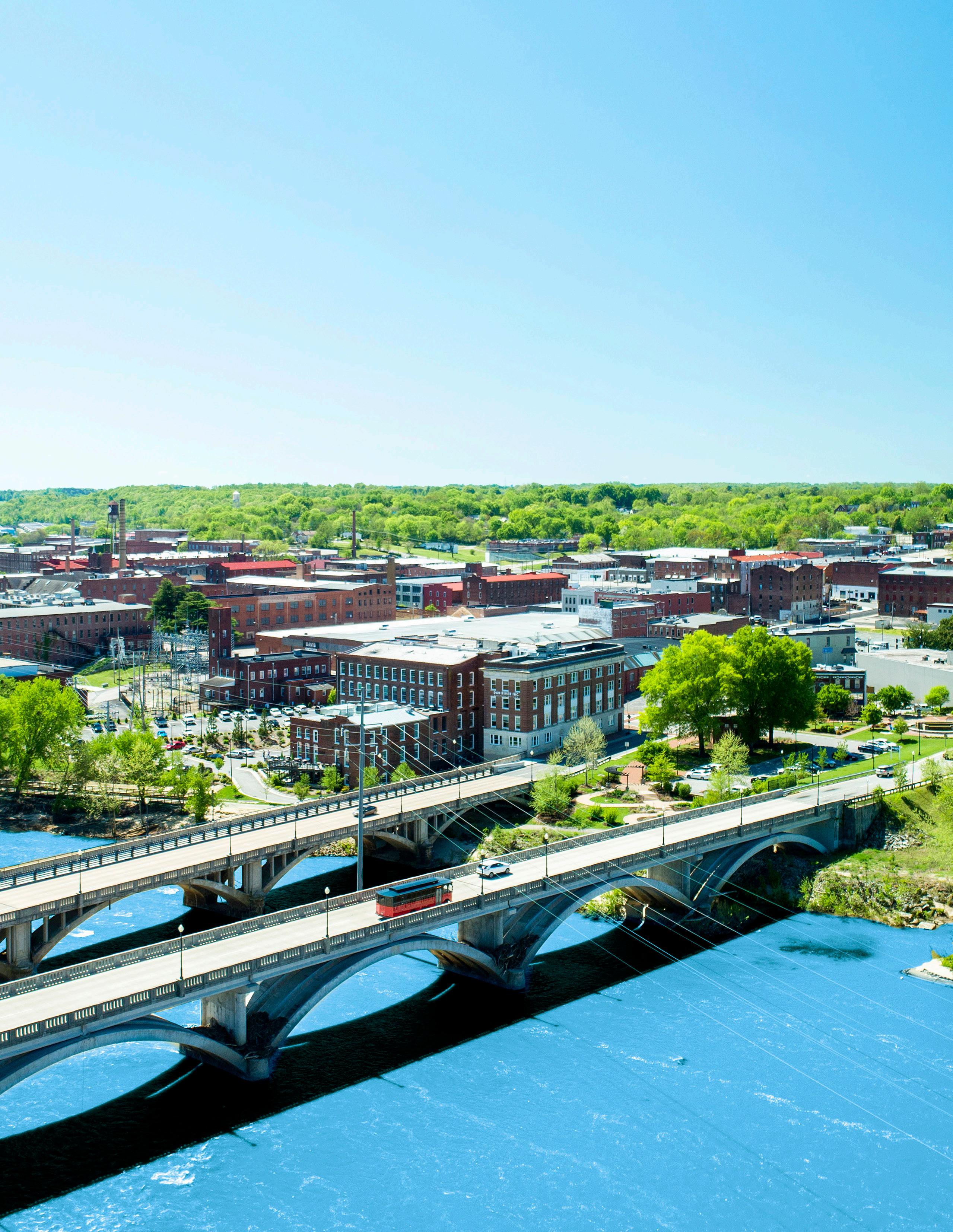
ACTION 1.1
Establish A Cultural Arts Division within the Parks and Recreation Department.
A Cultural Arts Division, responsible for cultural facilities, programming, classes within cultural facilities and general parks facilities, and public art, should be established within the Parks and Recreation Department.
Timing: Immediately
Necessary Staff: Parks and Recreation Director, City Manager
Potential Future Staff: Cultural Arts Manager, Public Art Coordinator
Relative Cost: $
Relative Impact: High
Target Character Profiles:



action 1.2
Seat the Cultural Arts Commission to provide staff guidance and community direction for arts and culture programming.
A Cultural Arts Commission should be established to support staff and generate community support for cultural arts in Danville. The Commission should be a 7-member body that includes a non-voting member of Council. Commission members should reflect the demographics of Danville in terms of age, race, gender, and income levels. The Cultural Arts Commission should be responsible for recommending proposals and the selection and commissioning of artists for the development of public art, advising city staff on public art projects and maintenance, and considering public art on public property throughout Danville.
Timing: Immediately
Necessary Staff: Parks and Recreation Director, City Manager, City Council
Potential Future Staff: Cultural Arts Manager
Relative Cost: $
Relative Impact: High
Target Character Profiles:
action 1.3




Establishing the Cultural Arts Division and implementing the Cultural Arts Plan will take significant leadership and qualified staff. Two full-time positions should be considered: Cultural Arts Manager and Public Art Coordinator. Both positions would report to the Parks and Recreation Director.
Timing: 1–2 years
Necessary Staff: Parks and Recreation Director, City Manager, City Council
Potential Future Staff: Cultural Arts Manager, Public Art Coordinator
Relative Cost: $
Relative Impact: High
Target Character Profiles:




A full-time staff member should be hired to manage Danville’s Cultural Arts Division and ensure that all cultural facilities and projects are managed according to the city’s best interests.
Responsibilities:
• Oversee all cultural facilities
• Direct programming at cultural facilities
• Manage bookings at city-owned cultural venues
• Manage and oversee the Public Art Program
• Develop and implement an annual Work Plan in coordination with the Cultural Arts Commission and appropriate city departments and representatives
• Manage staff who are responsible for executing art classes in parks facilities
• Review any necessary management agreements with artists, contractors, community groups, private property owners, and the city as needed
• Identify inter-departmental collaborations and sources of funds for cultural arts
• Serve as a liaison between the city, artists, cultural organizations, and cultural partners in Danville
• Report to the Parks and Recreation Department Head
• Support the Cultural Arts Commission
• All other duties as assigned
A Public Art Coordinator should be hired to manage Danville’s Public Art Program and ensure that each public art project is executed according to the city’s best interests.
Responsibilities:
• Develop and implement an annual Public Art Work Plan in coordination with the Cultural Arts Commission and appropriate city departments and representatives
• Oversee the administration of the commissioning of new works of public art, including, but not limited to:
• Project planning—Developing scopes of work and project budgets, coordinating with the project manager and project architect, and identifying community partners when necessary
• Management of the artist selection process—Developing and distributing RFQs and RFPs, staffing the artist selection commissions, and conducting artist workshops
• Project implementation—Developing contracts, getting necessary approval, coordinating with the project manager, reviewing preliminary and final designs, and monitoring artist progress and compliance with the project contact
• Documentation—Keeping records of contracts, photographs, construction drawings, maintenance manuals, and meetings
• Community education—Assisting in garnering publicity for projects, facilitating public meetings, and developing educational materials
• Oversee the work of project consultants
• Ensure adequate insurance and liability protection is secured by artists, contractors, and the city prior to installation
• Coordinate any necessary management agreements with artists, contractors, community groups, private property owners, and the city as needed
• Monitor private development projects to assist developers in including public art in their developments and guide them, when requested, through the process of placing public art
• Identify collaborations and sources of funds
• Oversee a comprehensive conservation survey of the Danville Public Art Collection and ensure all necessary repairs are conducted
• Serve as a liaison between the city, artists, and/or business organizations relative to the Public Arts Program
• Report to the Parks and Recreation Department Head
• Support the Cultural Arts Commission
• All other duties as assigned
action 1.4
Fund the Cultural Arts Program through a 2% dedication of Casino Revenue in perpetuity.
In order to realize the vision of the community becoming a destination for arts and culture, Danville should dedicate 2% of casino revenue annually to arts and culture. After 5 years, the city should examine how much revenue has been generated and determine whether other mechanisms are necessary to support the community’s vision for public art.
Timing: 1–2 years
Necessary Staff: Parks and Recreation Director, City Manager, City Council
Potential Future Staff: Cultural Arts Manager, Public Art Coordinator
Relative Cost:
Relative Impact: High
Target Character Profiles:






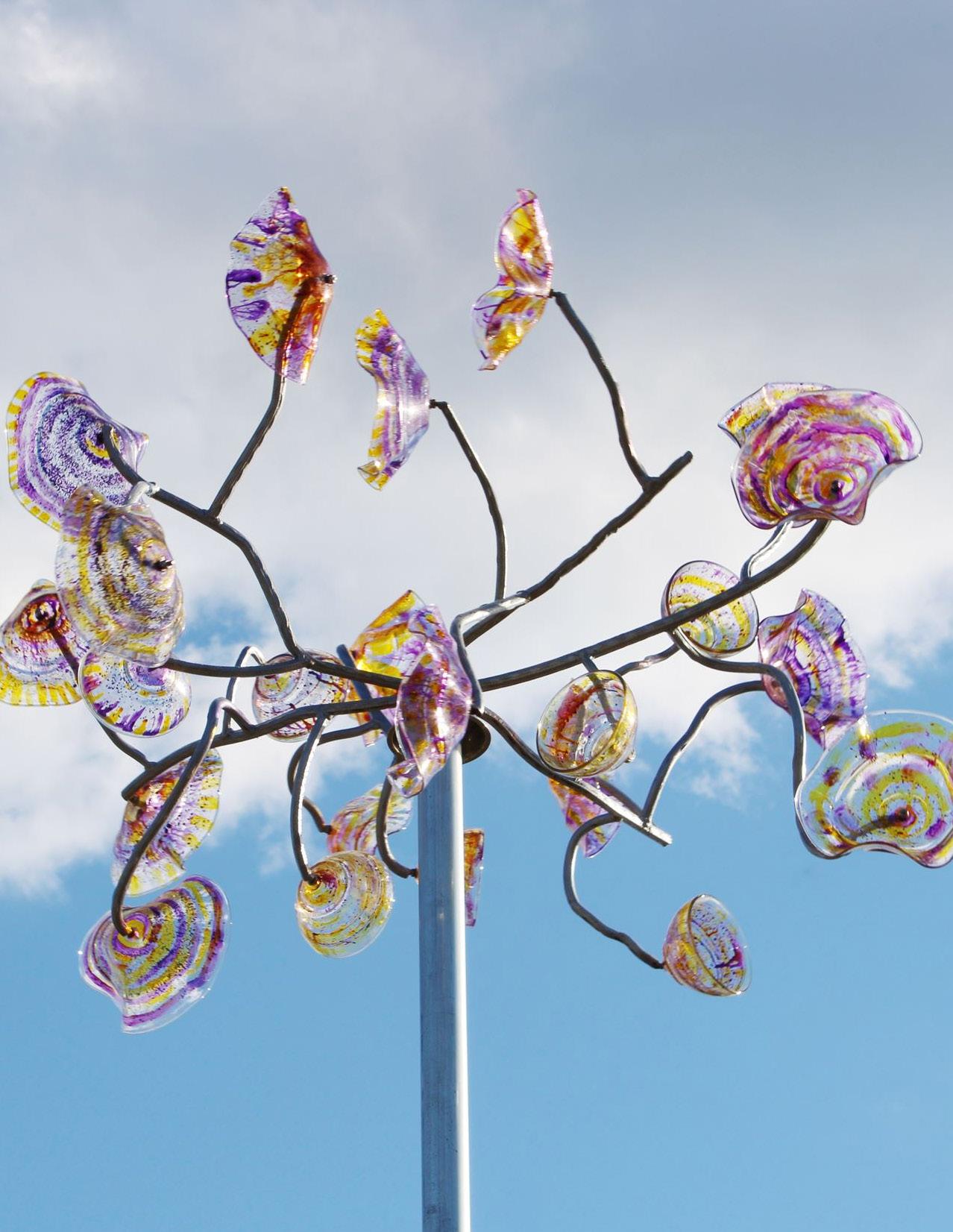
In order to establish a successful Public Art Program, the City of Danville should formally adopt the following policies. Each directs a specific aspect of the program and ensures the city is following consistent procurement practices; maintaining its commissions through long-term planning and maintenance; governing the program with strong public trust; and providing clear direction for artists, private developers, and donors to follow when participating in the program. The proposed policy and guidelines can be found beginning on page 69.
Timing: Immediately
Necessary Staff: Parks and Recreation Director
Potential Future Staff:
Relative Cost: $
Relative Impact: High
Public Art Program Introduction (p. 69)
This policy establishes the mission, vision, and guiding principles for the program, as well as overall definitions for the policy.
Collection Management Policy (p. 77)
This policy establishes the management practices of artworks acquired through the solicitation and donation processes, which are considered part of the city’s Permanent Collection and must be cared for accordingly.
Donation Policy (p. 81)
This policy establishes the donation process for artworks not commissioned by Danville, each of which must come with a plan to fund and deliver ongoing maintenance for it.
Maintenance Policy (p. 83)
This policy establishes the procedures for maintenance of the art collection.
Administrative Guide (p. 70)
This guide outlines the roles and responsibilities of citizens, city staff, and elected officials in the development, funding, and implementation of the Danville Public Art Program.
Mural Guidelines (p. 85)
These guidelines outline how to handle publicly-owned murals on both public and private property and include the process for approval.
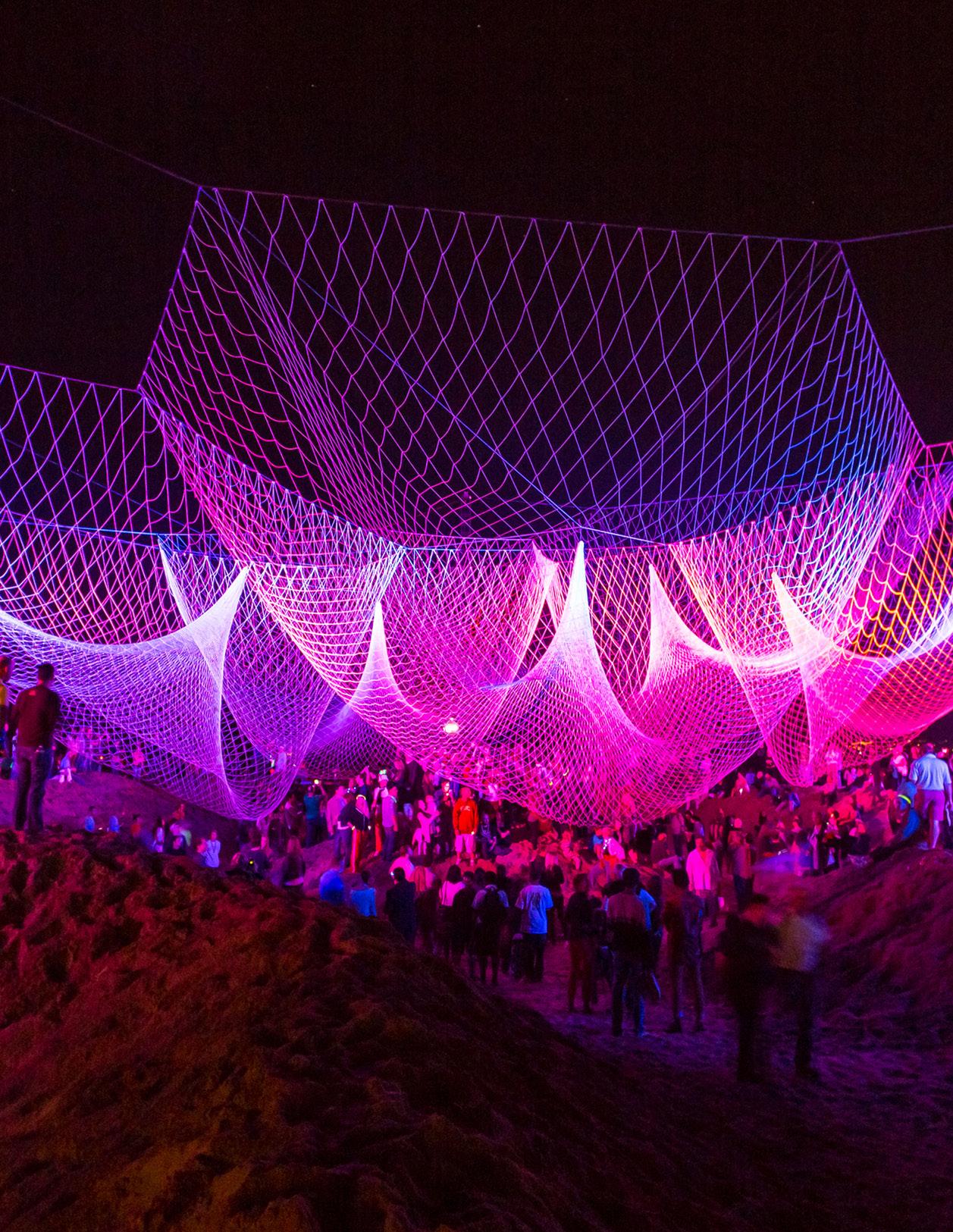
Temporary public art events are gaining popularity across the world and provide significant benefits to the communities that host them. Usually for a long weekend to a few weeks, a temporary art event has a theme and stacks cultural experiences on top of the main event—public art. The work could be lights, murals, or sculpture. Events are ticketed and seek to recoup some costs associated with the event. Often these events take place every two years and seek to become a destination within their host region. Such an event in Danville could start small to gauge interest and then grow annually.
• Determine what type of event the city should host and what year would be appropriate to host the first event.
• Select a site for the first annual event and consider how to make it a success through marketing, budgeting and fundraising, and the stacking of cultural experiences.
• Execute the first temporary public art event and gauge from participants—through surveys or social media activity surrounding the event—whether future events could be more ambitious.
Timing: 2–3 years
Necessary Staff: Event coordinator
Potential Future Staff: Event Coordinators, Public Art Coordinator
Relative Cost: $–$$
Relative Impact: High
Target Character Profiles:





The Glow Festival hosted on and around the Santa Monica Pier in California is listed as the “country’s only nighttime arts celebration that showcases all original work.” At the 2010 festival, the 150,000 people in attendance were able to enjoy around 15 light-up interactive art installations along the boardwalk. Organizers brought artists from California and around the world to feature their art at this onetime event that received widespread attention and pleas from the community for another.
North Forest Lights is a seasonal nighttime lighting experience offered annually in Bentonville, Arkansas. The exhibition, which premiered in 2019 and has come back each year since upon demand from the community, takes visitors through an outdoor trail featuring 5–8 themed installations with different light, sound, and sensory effects. The concept was created and produced by The Momentary and brought to Bentonville by Crystal Bridges Museum of American Art. Each year, news sources have predicted the exhibition would not return, but another installation was featured throughout 2023.
Invest in public art along Danville’s trail system to enhance trail users' experience.
An investment in public art along Danville’s extensive and well-used trail system would be an early win for the public art program and demonstrate the city’s continued commitment to unique experiences. The city should invest in a number of public art pieces along the trail that vary in scale and size and are placed throughout the trail experience. Some pieces should be at trailheads, while others should only be accessible to those using the trail by bike or on foot.
Priority Actions:
• Consider the entire trail network and where new connections should be made, including the connection of the Riverwalk to the Casino, which spans 2.6 miles.
• Identify funding for public art along the existing trail system, whether from the general fund or grants (as new trails will benefit from the new percent for art funding).
• Develop a plan for placement along the trails. Consider trailheads, intersections with major roadways or intersecting trails.
Potential Public Art Projects for the Trails:
• Painting or lighting of smokestacks
• Mural boards along trail
• Temporary sculpture along trail
Timing: 3–5 years
Necessary Staff: Parks and Recreation Director
Potential Future Staff: Public Art Coordinator
Relative Cost: $–$$
Relative Impact: High
Target Character Profiles:





The Indianapolis Cultural Trail is an 8-mile urban bike and pedestrian path that lies throughout downtown Indianapolis, Indiana. The trail makes use of the city’s greenway system and connects users to neighborhoods, 6 of the 7 cultural districts in the city, museums, theaters, shops, restaurants, hotels, and parks. Along the trail, users can find 7 public art pieces, most of which were commissioned for the neighborhoods the trail passes through. The trail is also near at least 61 art pieces that users can step away to enjoy. The trail was originally designed and constructed with $63 million that came from local philanthropy and federal transportation grants. It opened around 2013 after 12 years of planning and 6 years of construction. It is now managed and maintained by the nonprofit Indianapolis Cultural Trail Inc (ICT Inc). It is estimated that the economic impact of the trail since opening is $864.5 million; several other projects across the U.S. and Canada have been inspired by the Indianapolis Cultural Trail.
The Johnny Cash Trail in Folsom, California is 2.5-mile bike and pedestrian trail that opened in 2017 and connects users to the Folsom Historic District, 2 waterways, and historic prison grounds, and stands as an addition to the existing 50+ miles of paved trails in the area. This is an ongoing project, but once the installations are finished, users will be able to find 8 sculptures inspired by Johnny Cash’s historic performance in Folsom, and one of Cash’s songs, “Man in Black.” The sculptures that will be seen here were designed by either artists from the local public art firm Romo Studios or the Illinois-based Fine art Studio of Rotblatt Amrany. As the trail user walks through, they will have the opportunity to use an app on their smartphone to take a free self-guided tour through Cash’s life using each art piece as a benchmark. As the project progresses, funds are being raised, mostly through donations from the community. Johnny Cash’s son, John Carter Cash, performed in Folsom in 2022 to help raise money to fund the project.
To celebrate the building of a new soccer stadium in Columbus, Ohio, smokestacks were painted and outfitted to billow colorful smoke to enhance the fan experience and bring something unique to the stadium.


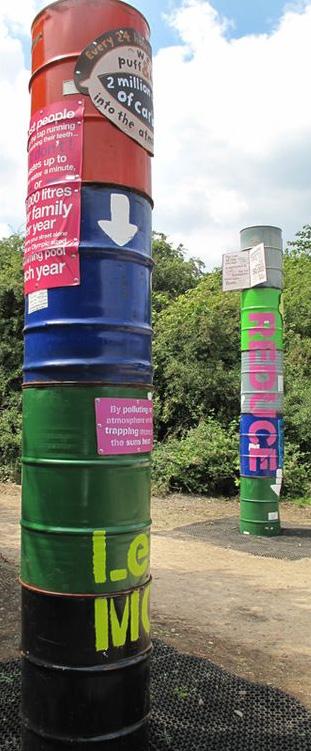
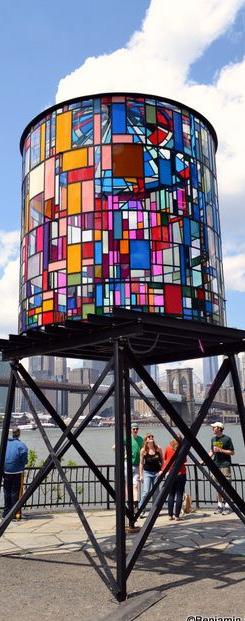
The city should establish a Danville Mural Grant Program that funds up to 50% of the cost of new murals on private property to support the creation of new murals throughout Danville. Applicants would have to abide by the mural guidelines and submit a permit application. Funds should be distributed on a first come, first served basis. Applicants should submit their contract with their selected artist and proof of payment to receive grant funds. The city could also allow grant funds to be used for restoration of historic murals.
Priority Actions:
• Identify funding for the mural grant program and establish the annual allocation for the program.
• Understand potential approvals for murals in specific areas and establish a process for approaching approval.
• Develop the application process for the grant funding.
• Market the grant program to property owners.
• Manage applications and required paperwork for receiving the grant funds.
Timing: 3–5 years
Necessary Staff:
Potential Future Staff: Public Art Coordinator
Relative Cost: $
Relative Impact: High
Target Character Profiles:






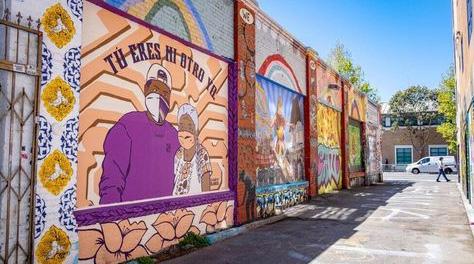
The existing River District pocket parks are great assets and should have public art added as key features. These pocket parks could have regular programming within them as well, and act as places of respite for pedestrians who are exploring downtown.
Priority Actions:
• Determine public art opportunities.
• Consider partnering with the Danville Historical Society, which owns the Home Sign.
• Implement public art.
• Understand the site's capacity for regular cultural programming.
Timing: 3-5 years
Necessary Staff: Parks and Recreation Director
Potential Future Staff: Public Art Coordinator, Cultural Arts Manager
Relative Cost: $$
Relative Impact: High
Target Character Profiles:




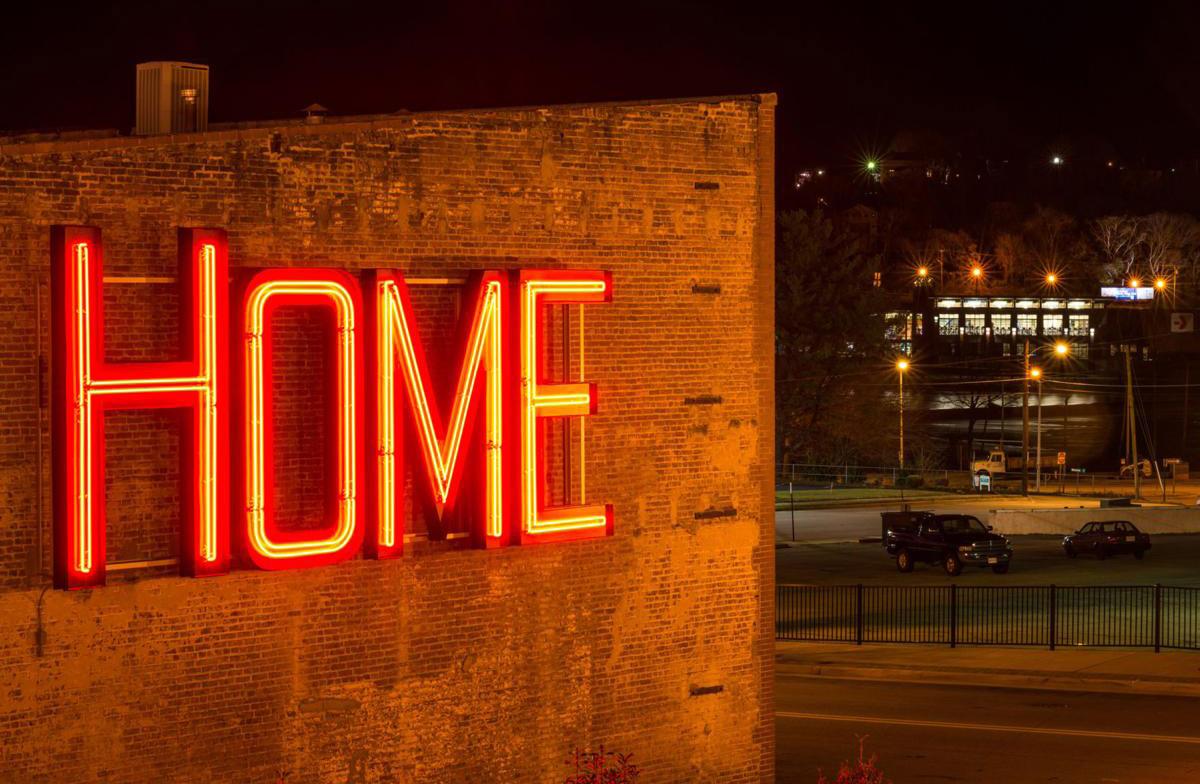


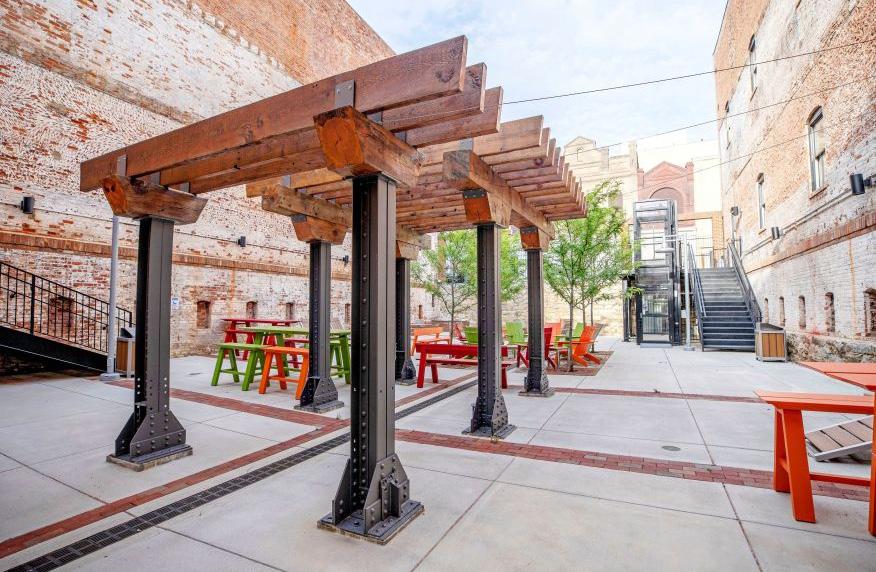
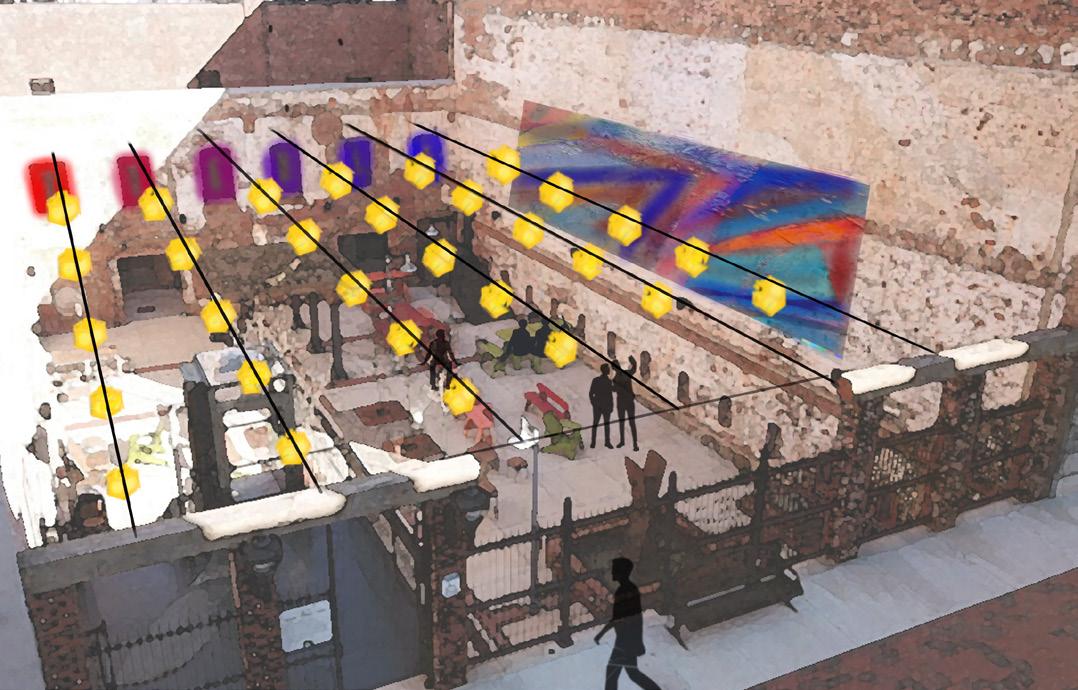
Danville should designate the River District and the adjoining sections outlines below as the Cultural District. This designation should direct funding and bring additional visibility to the arts that already exist as well as lay the foundation for more investment in the arts. Danville should consider directing funds for projects for a certain period of time to programming and public art within downtown to ensure early high impact projects. Digital kiosks could be installed to advertise cultural events and celebrate local artists. Recorded performances and static images should be considered for the kiosks.
Priority Actions:
• Determine boundaries of the Cultural District.
• Determine if an incentive program should be created for creative businesses within the boundaries of the District in which a subsidy could be offered for new creative businesses.
• Understand marketing needs for adding additional identity to the River District and what support is needed to achieve desired marketing objectives
• Understand proposed events and regular programming needs and develop a plan to achieve these objectives
• Determine what future areas of Danville could be designated cultural districts in the future.
Timing: 1–3 years
Necessary Staff: Parks and Recreation Director
Potential Future Staff: Public Art Coordinator, Cultural Arts Manager
Relative Cost: $
Relative Impact: High
Target Character Profiles:







Danville should commission an artist to design a playground that elevates the play experience for parents and children alike, and becomes a signature experience within the city.
Priority Actions:
• Identify a centralized park that would make an ideal site, such as Ballou Park.
• Procure funding for the project.
• Release a national call for artists under following the outlined public art policy.
• Contract with an artist to design and install the playground.
Timing: 2–5 years
Necessary Staff: Planning Staff
Potential Future Staff: Public Art Coordinator
Relative Cost: $$
Relative Impact: High
Target Character Profiles:






Danville should establish the Neighborhood Placemaking Program Grant to provide neighborhoods an opportunity to consider their unique identities and how an artist might manifest them artistically. This program could accept applications on a rolling basis, with a target investment of 3 neighborhoods annually.
Priority Actions:
• Identify neighborhoods of Danville and organizations that may be interested in the program.
• Build the program requirements and understand anticipated budgets for temporary pieces of work.
Timing: 1–3 years
Necessary Staff: Planning Staff
Potential Future Staff: Public Art Coordinator
Relative Cost: $
Relative Impact: High
Target Character Profiles:






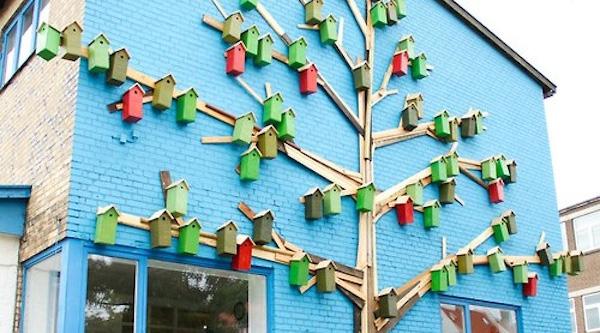
action 3.8
The Dan River Falls building project and proposed pedestrian bridge, grounds, and white water rafting concept would present ideal opportunities to incorporate compelling public art. Each project component could include unique elements, such as large-scale sculptures, murals, and artistic lighting treatments. Art pieces that enhance the pedestrian experience on the bridge and/or play into cultural programming for the bridge should be utilized. A public art project that could draw many to the area would be a series of sculptures installed on rock and other surfaces used to create the white water rafting course. As rafters ride the rapids they would see public art like it has never been experienced anywhere else in the world.
Priority Actions:
• Determine public art opportunities.
• Implement public art.
• Understand the capacity of the site for regular cultural programming.
Timing: 3–5 years
Necessary Staff: Parks and Recreation Director
Potential Future Staff: Public Art Coordinator, Cultural Arts Manager
Relative Cost: $$/project
Relative Impact: High
Target Character Profiles:





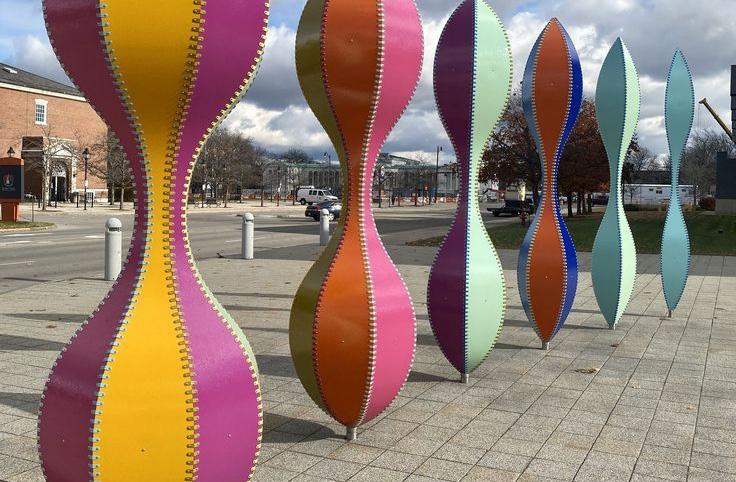


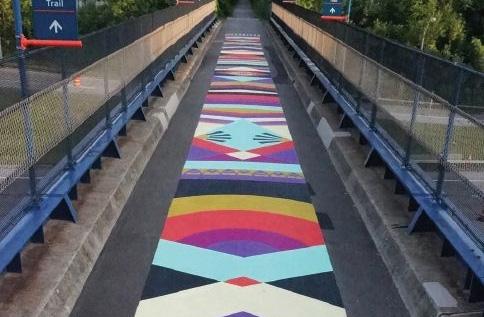
In order to leverage the region's creative talent, Danville should invest in adaptive reuse, historic preservation projects, or infill development opportunities that create artist live-work spaces. This will serve to support the cultural district and adjacent downtown areas' economic vitality and overall livability. It will also capitalize on complementary urban functions that strengthen the downtown social and economic fabrics. The city should aim to provide affordable spaces that can grow with artists as well as explore the potential of subsidizing their living and working spaces while connecting them to local resources and spaces that will support their pursuits. Danville can also leverage existing state and national funding mechanisms such as historic tax credits to fund this project.
Priority Actions:
• Determine potential sites
• Partner with and/or provide incentives to developers
• Build and program the spaces
Timing: 3–5 years
Necessary Staff: Parks and Recreation Director
Potential Future Staff: Public Art Coordinator, Cultural Arts Manager
Relative Cost: $$$
Relative Impact: High
Target Character Profiles:



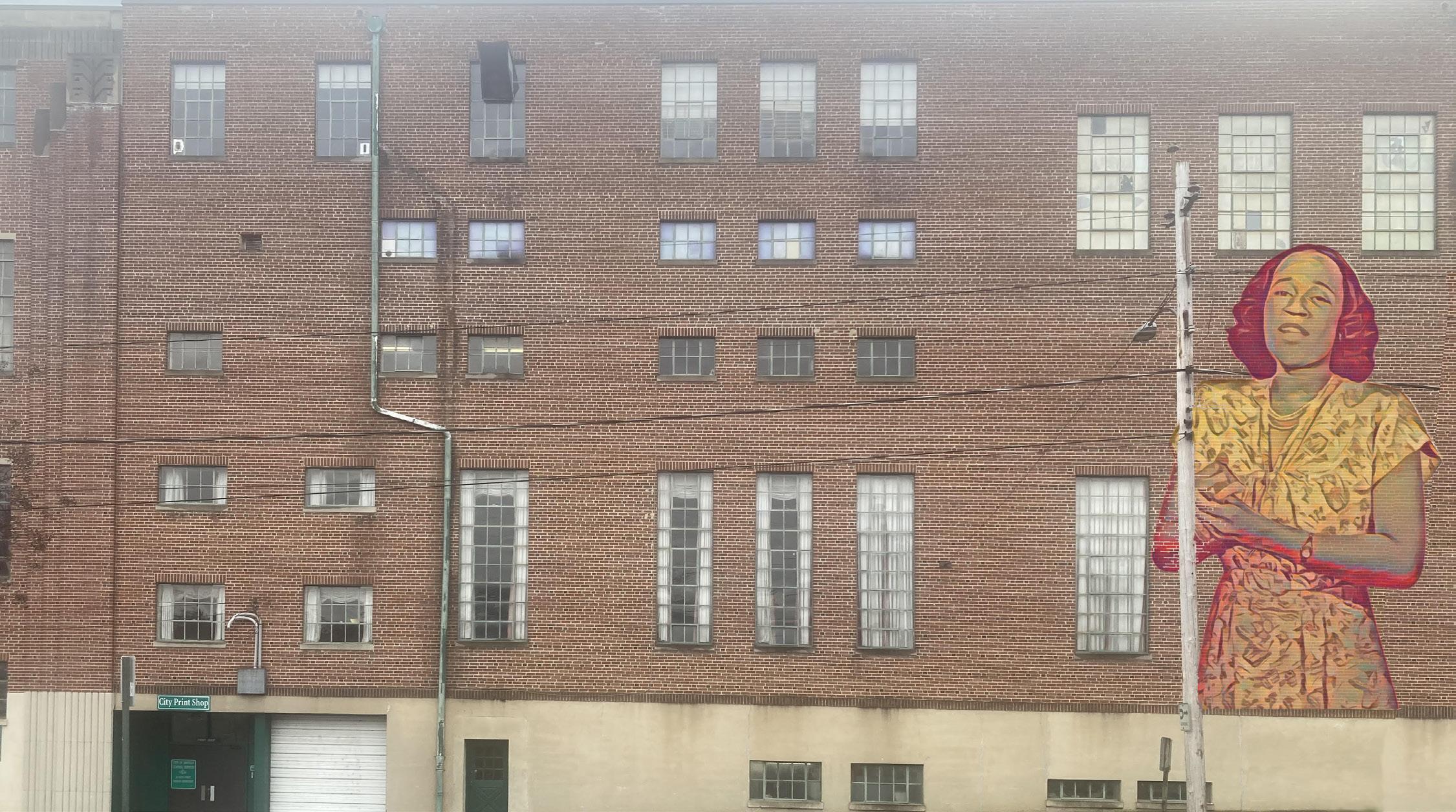
The city-owned Woolworth Building, the adjoining alley connecting the space to the Union Street pocket park, and Newton Street make ideal first priorities for alley and street interventions that feed pedestrians to and from the Cultural District. In these spaces, Danville should explore funding murals and placemaking projects to enhance these minor corridors that are key to walkability.
Priority Actions:
• Determine public art opportunities.
• Implement public art.
• Understand the capacity of the site for regular cultural programming.
Timing: 1–5 years
Necessary Staff: Parks and Recreation Director
Potential Future Staff: Public Art Coordinator, Cultural Arts Manager
Relative Cost: $-$$/project
Relative Impact: High
Target Character Profiles:





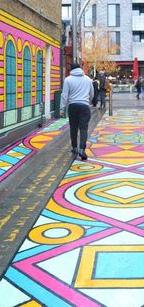

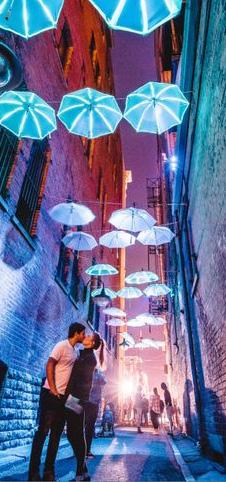
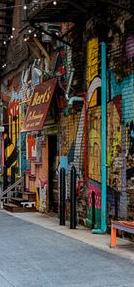
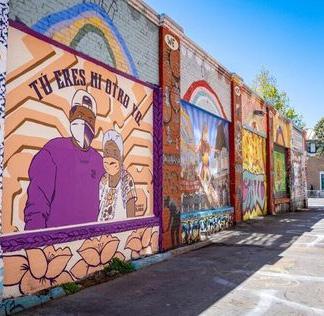
Artwork and placemaking should be explored in alleyways, key pedestrian corridors, and streets designated for improvements, such as Union Street & Newton Street

Art should be stationed along trails to enhance the trail user experience, such as RiverWalk Trail.
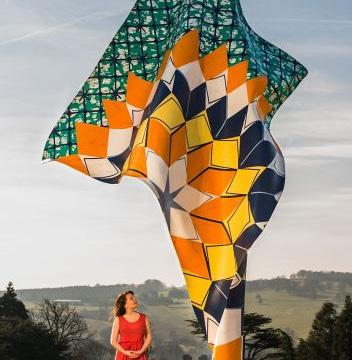
Art should be stationed at gateways in key city districts and corridors, such as the Schoolfield District, the Historic District, the Riverfront District, and the Culture District
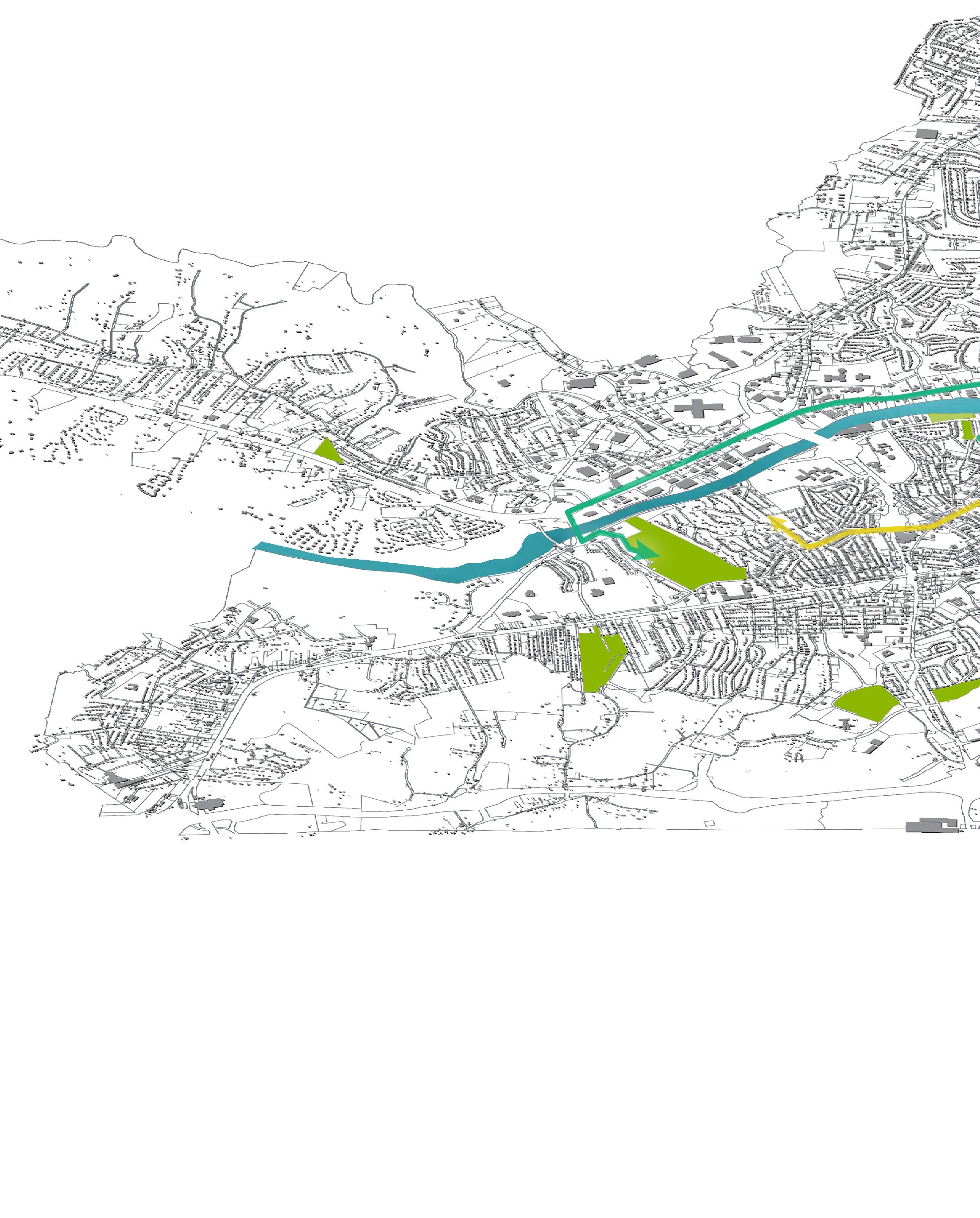
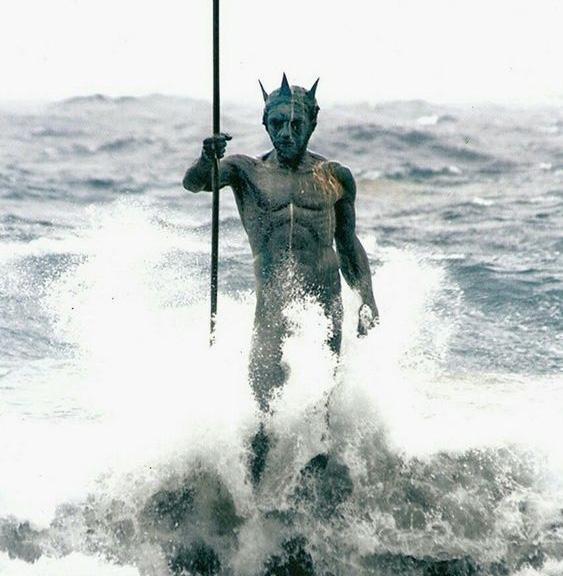
The planned Dan River Falls site, bridge, and white water rafting center provide ample opportunities for artwork.
Cragheadstreet


Art can transform sites that give a nod to current or former industries of Danville, such as Gateway to Cyber Industrial Park, smokestacks & water towers
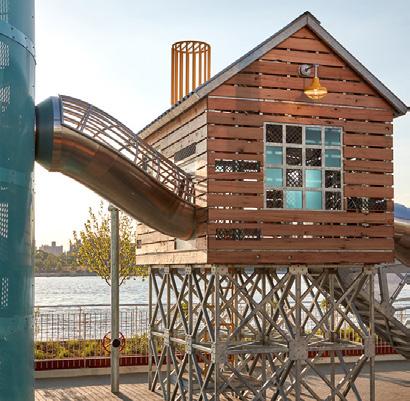
Many parks have programming opportunities, such as Ballou Park, Doyle Thomas Park, Riverfront Park, Camp Grove Rec Center & Union Street Pocket Park
• Neighborhood Placemaking Grant Opportunities
• Murals Grant Opportunity Sites
• Temporary Art Opportunities
• Community-Created Art Opportunities
Art Trail Art Pieces
Key Corridor or Trail
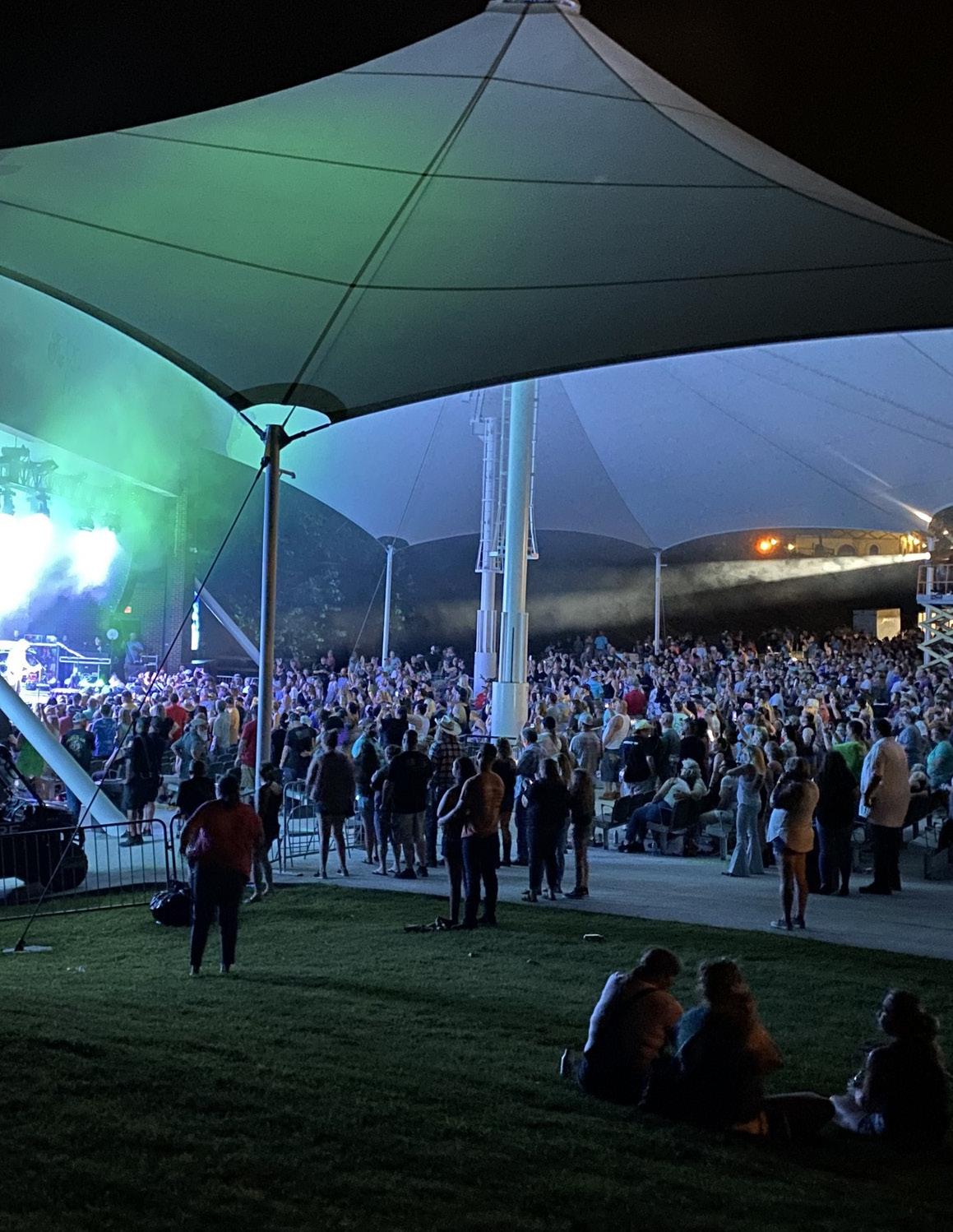
Danville should conduct a building assessment of the existing facilities, such as the City Auditorium, to determine how to get the facilities into a condition to provide year-round programming.
Priority Actions:
• Programming to be considered includes:
• Black box theater
• Rehearsal space
• Event venue
• Auditorium
• Classrooms
• Studio space
• Community meeting rooms
• The renovation of the City Auditorium should be considered as a potential rehabilitation project.
• The city should consider dedicating the City Auditorium to local historical figure and vocalist Camilla Williams.
• Parking, bathrooms, and ADA compliance must be considered when renovating spaces.
• Collect comparable scopes of services from peer cities for review.
• Draft a scope of services for a market feasibility study and business plan for a City of Danville Performing Arts Center or Danville Cultural Arts Center in the newly renovated space.
• Go through the city procurement process to release and manage the RFP process.
• If in alignment with procurement processes, identify specific planning firms and directly distribute the Request for Proposal (RFP) to them.
Timing: 1–2 years
Necessary Staff: Parks and Recreation Director
Potential Future Staff: N/A
Relative Cost: $
Relative Impact: High
Target Character Profiles:





Danville’s exhibition spaces are limited to walls in restaurants, hospitals, and other pass-through areas. To elevate visual arts in Danville, and provide established and emerging local artists with professional exhibition and display opportunities, the city should—either independently or through public/private partnership—establish professional-grade gallery spaces in the Downtown River District. These galleries should have moveable walls and pedestals, gallery lighting, temperature control, storage, and a reasonable amount of security. They should have some suitability for small gatherings (artist talks, opening receptions, etc.) and private events.
Priority Actions:
• Develop a programming and operating plan for temporary and/or permanent gallery space(s) downtown. The city may do this internally or hire a consultant to do so.
• Identify vacant/underutilized storefronts in Danville’s River District that could temporarily or permanently be converted to gallery/exhibition space.
• Retain an architect and/or individual with expertise in gallery operations to complete a building conditions assessment to determine the identified structure’s (or structures’) suitability for gallery use. The assessment should consider changing options and capabilities, ADA access, amenities like restrooms and running water, electrical systems, security, and storage, among other things.
• Secure potential gallery spaces and implement the operating plan.
• Based on the outcomes of the gallery space downtown, consider the viability of additional gallery space in future or up-and-coming arts districts.
• If deemed viable, develop a programming and operating plan for galleries in future or up-andcoming arts districts.
Timing: 1–2 years
Necessary Staff: Parks and Recreation Director
Potential Future Staff: Cultural Arts Manager, Gallerist or Curator
Relative Cost: $
Relative Impact: Medium
Target Character Profiles:






Establish the Danville Cultural Arts Grant Program to support existing organizations and new programming in Danville.
The Danville Cultural Arts Grant Program should be established to provide operational funds for existing cultural organizations within the community. Grant funds should also be used for new programming and events hosted by existing cultural organizations.
Priority Actions:
• Allocate $100,000 for the inaugural grant program. Grants should consider new programming, operational support, the mural incentive program listed in strategy 3.3, and events.
• Write grant guidelines and release a call for applicants.
• Evaluate success of grant program to determine if demand for funding exists and level of need within Danville.
Timing: 1–2 years
Necessary Staff: Parks and Recreation Director
Potential Future Staff: Cultural Arts Manager
Relative Cost: $
Relative Impact: High
Case Studies: Peoria, AZ
Target Character Profiles:






Residents are overwhelmingly interested in increasing the number of festivals and events throughout the city. Danville should consider hosting a number of test events in existing parks to understand the demand in each core area. Events could include: movies or concerts in the parks, arts festivals, mural-making on temporary materials, and food festivals.
Priority Actions:
• Identify parks that have existing infrastructure to support events (ample parking, electrical access, and restrooms).
• Understand what parks would be successful at what type of programming.
• Consider the budget for each event.
• Seek partners for each planned event.
Timing: 1–2 years
Necessary Staff: Parks and Recreation Director
Potential Future Staff: Cultural Arts Manager
Relative Cost: $
Relative Impact: Medium
Target Character Profiles:








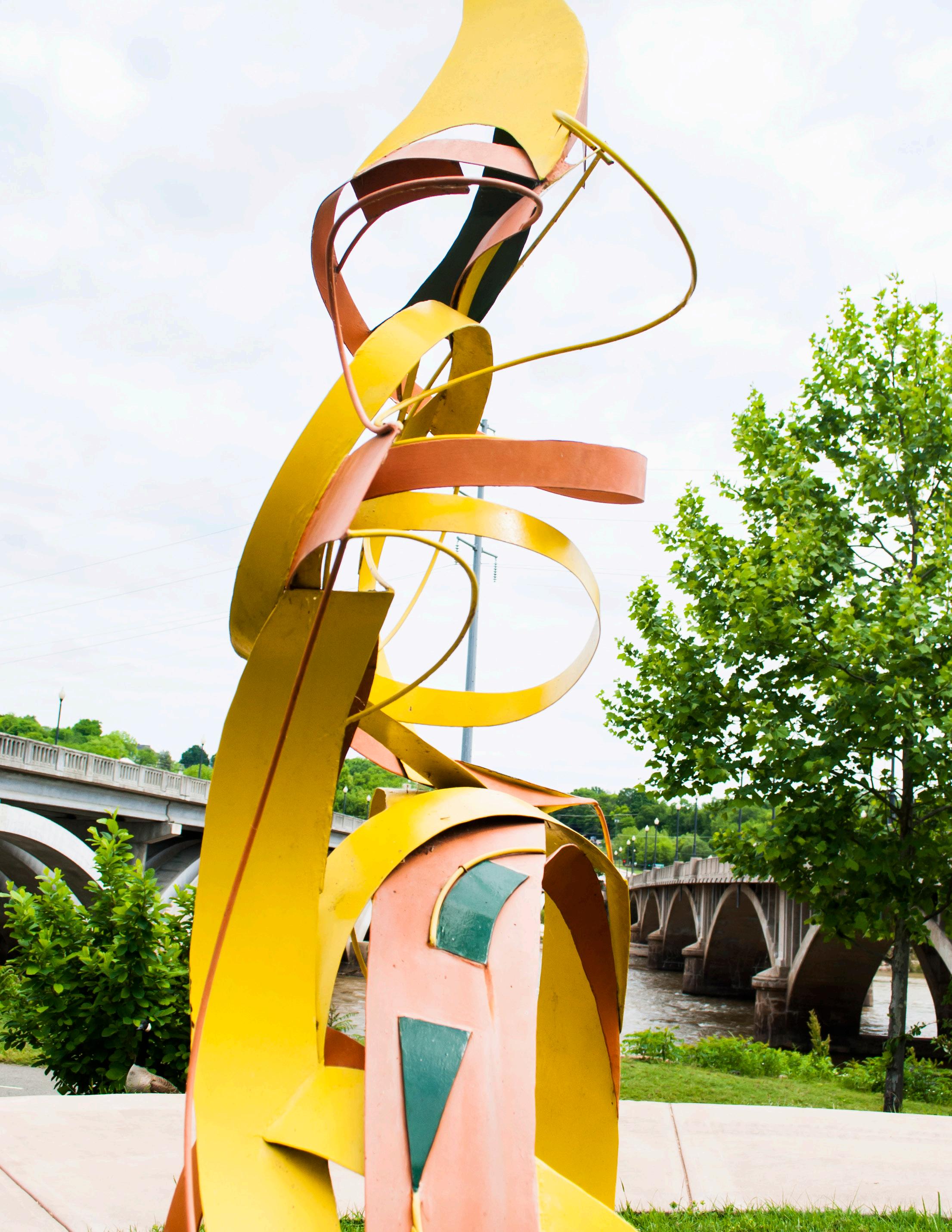
In order to establish a strong Public Art Program, the City of Danville will adopt this overall policy, which includes: Roles & Responsibilities; Work Plan; Use of Funds; Acquisition; Collection Management; Donation; and Maintenance.
For the purposes of this policy, the following terms, phrases, words and their derivation shall have the meaning given herein:
Artist means a practitioner of the creative arts, generally recognized as such by critics and peers, with a body of work including commissions, exhibitions, sales, publications, and collections. For the purposes of this document, “artist” shall not include persons primarily working in the professional fields of architecture, engineering, design, or landscaping.
Danville Cultural Arts Commission, when used herein, shall mean the designated Arts Commission of the City of Danville, serving in an advisory capacity to Danville City Council.
Danville Public Art Collection, when used herein, shall mean all works of art owned by the City of Danville, Virginia and its agencies and authorities.
Cultural Arts Master Plan or Plan, when used herein, shall mean the Cultural Arts Master Plan of the City of Danville, Virginia, as it exists or may be amended. The Plan shall provide a process for the systematic selection of pieces of art and locations of art to be included in public spaces.
Public Art Coordinator, when used herein, shall mean the Public Art Program Coordinator, as determined by the City Manager.
Public Art Program, when used herein, shall mean the Public Art Program of the City of Danville, Virginia.
City, when used herein, shall mean the City of Danville, Virginia.
Public Art, Art, Work of Art, or Artwork, when used herein, shall mean an original physical work created or produced by an Artist that is accessible to the public. Artwork may be free-standing or integrated with the work of other design professionals into a building or site. Artwork may be new or may be an existing work of art. Artwork may include, but is not limited to:
1. Sculpture—free-standing, wall-supported or suspended; kinetic; electronic; in any material or combination of materials
2. Murals or portable paintings—in any material or variety of materials
3. Fiber works, neon, glass, mosaics, photographs, prints, calligraphy, earthworks, any combination of forms of media, including light, sound, literary elements, film, holographic images, and video systems; hybrids of any media and new genres
4. Furnishings or fixtures—including, but not limited to, gates, fences, railings, lighting, street lights, signage, and seating, if created by artists as unique elements or limited editions
5. Artistic or aesthetic elements of the overall architecture or landscape design—if created by a professional artist or a design team that includes a professional visual artist; such design elements may include pools,
paths, benches, planters, fixtures, and vegetative materials, where designed by a professional visual artist and/or are an integral part of the artwork by the artist
6. Temporary artwork or installation that serves the purpose of providing community and educational outreach
The following are, per the Ordinance, not considered artwork for the purposes of Public Art funding:
1. Art objects which are mass produced or are of standard manufacture, such as playground equipment, fountains, statutory elements, signage, maps, corporate logos, or other functional elements, unless incorporated into an artwork by an artist commissioned for that purpose
2. Reproductions, by mechanical or other means, of original artwork, except in the case of limited editions controlled by the artist, cast sculpture, film, video, photography, printmaking, or other media arts
3. Decorative, ornamental, architectural, or functional elements which are designed by the building architect as opposed to elements created by an artist commissioned for that purpose
4. Artwork in City facilities that are within employee offices or spaces
5. Services or utilities necessary to operate and maintain an artwork over time
Public Space, when used herein, shall mean any area or property (public or private) which is accessible or visible to the general public a minimum of 8 hours per business day.
Publicly Owned Land when used herein shall mean any land open to the public and managed by the City of Danville, Virginia, its agencies or authorities.
The Administrative Guide (“Guide”) outlines the roles and responsibilities of citizens, City staff, and elected officials in the development, funding, and implementation of the City of Danville Public Art Program. This guide is intended to ensure that the City of Danville Public Art Program is implemented in a fair and consistent manner that enables a community-oriented, artistically creative process and promotes the cultural, aesthetic, and economic vitality of Danville.
The Public Art Program will be guided by the City of Danville Cultural Arts Commission and administered through City Staff assigned by City Manager. The City will retain ultimate responsibility for the program. Dayto-day responsibility for the program will reside with the Public Art Coordinator or designated staff member. The Public Art Coordinator will have an oversight role of all public art projects that are executed within the City. The Public Art Coordinator will collaborate with additional City staff or outside contractors in order to execute projects. This guide is only to be used when public dollars are being spent on public art or when public art is being placed on City-owned property.
The City Council will adopt an ordinance establishing the Danville Public Art Program and adopting the Cultural Arts Master Plan as the guiding document for the Public Art Program. The ordinance will also adopt the Danville Public Art Policy. As the community’s elected officials, the City Council members are ultimately responsible for the outcomes of the Public Art Program.
The Danville Mayor and City Council have the following responsibilities:
• Review and approve the annual Public Art Work Plan, as prepared by the Public Art Coordinator and the Cultural Arts Commission
• Confirm Mayoral appointments to the Cultural Arts Commission
• Approve of public art through the City’s procurement practices
The City appoints the Cultural Arts Commission (The Commission). This group is an eleven (11)–member body. All members shall be appointed by the City Council. Members of the Cultural Arts Commission shall serve 3-year terms, with a 2-term limit, or until their successors are appointed.
The Cultural Arts Commission has the following responsibilities:
1. Provide the expertise and effort necessary to have a financially sustainable Cultural Arts Program that advocates for artistic participation
2. Advise the City Council and City staff with regard to policies that will strengthen cultural initiatives and further public access to art
3. Ensure the efficient and effective use of public funds, making responsible and prioritized project recommendations as part of the annual budget process
4. Review cultural grant applications and make recommendations to staff on what applications to fund
5. Review and approve public art conceptual plans for specific public art projects and approve artist selection
6. Review proposals for donations of public art and recommend specific pieces of art for strategic placement throughout the City
The Public Art Coordinator should be designated to oversee Citywide public art activities as they may occur throughout many City departments. Staff may delegate activities to a designee as needed and as approved by the City Manager.
Responsibilities include:
• Work with various departments to develop potential projects for inclusion in the annual work plan
• Present an annual work plan to the City Manager
• Coordinate with Cultural Arts Commission to ascertain advice on any matter pertaining to public art including:
• Annual work plan
• Artist selection juries and process
• Purchase of artworks
• Commission and placement of artworks
• Public art programming
• Present an annual report of public art activities
• Coordinate the hiring of an outside consultant or agency to administer public art projects on an as-needed basis in accordance with City financial policies
• Ensure various City departments are following the City’s Public Art Policy
• Develop special projects and programs
• Coordinate meetings and records of the Cultural Arts Commission to comply with state laws
The Public Art Work Plan is an annual document that outlines what projects will be initiated in the coming fiscal year, as well as projects that will be in process during that fiscal year. The work plan is one of the most crucial elements of the Public Art Program, as it creates a roadmap for the year and allows for the input of community members, elcted officials, and others who care deeply about public art in Danville.
The Public Art Coordinator will develop the Plan in consultation with the Parks and Recreation Director and Cultural Arts Commission and submit it to the City Council as part of the annual budget for its review and approval.
The following steps will be taken to develop the Public Art Work Plan:
• Work with the City Manager to determine availability of funds for the upcoming year
• Identify projects to be paid for by identified funding including acquisition and maintenance
• Develop a draft Public Art Work Plan that will include locations, goals, and budgets for public art projects and programs for review
• Present the Plan to the City Council as part of the City budget approval
• Integrate feedback from the City Council to determine the final Work Plan
Funding for the Danville Public Art Program may come from Danville’s Capital Improvement Project Budget, revenue from the casino, or other sources, as deemed appropriate by the City, as well as from grants and/or contributions from private entities, other public agencies, or philanthropic sources.
The public art funds may be spent for:
• Calls for Entry, RFQ’s/RFP’s, concept designs, maquettes, juror stipends, and other costs related to competitions and Commissions
• Artist fees including travel stipends and expenses related to travel
• Artwork fabrication and installation
• Site preparation and cleanup
• Acquisition of existing works of art
• Relocation of existing or commissioned works of art
• Required permits and insurance during the fabrication and installation of the artwork
• Informational/promotional materials and public events directly related to the artwork
• Required equipment needed for installation
• Artwork appraisal
• Art-related community events
• Staffing and services of an Arts Administrator
• Curators and contracted services
The public art funds may not be spent for:
• Mass-produced work, with the exception of limited editions controlled by the artist
• Professional graphics, unless designed or executed by an artist or used in the development of collateral material
• Decorative, ornamental, or functional elements that are designed by a project’s architect or other designer
• Routine maintenance exceeding more than 10% of the annual budget
• Purchase of existing works of art outside of the selection process
This policy establishes the practices for acquiring artworks. The policy creates a thorough and transparent process for acquiring artwork and favors open-ended selection processes in order to ensure artistic excellence in the City’s Public Art Collection.
Selecting the artist is one of the most important steps in commissioning public art. An open, equitable, competitive process that inspires the artist and engages the community can be an enriching experience and lead to more creative and exciting public art.
• To satisfy the goals of the project site through an appropriate artist selection
• To further the mission and goals of the Public Art Program
• To select an artist or artists whose existing public artworks or past collaborative design efforts have demonstrated a level of quality and integrity
• To identify an approach to public art that is suitable to the goals and demands of the particular project
• To select an artist or artists who will best respond to the distinctive characteristics of the site and the community it serves
• To select an artist or artists who can work successfully as members of an overall project design team
• To ensure that the selection process represents and considers the interests of all parties concerned, including the public
• To ensure the demographics of the artists and selection committees are reflective of Danville’s population, on average
In an Open Competition, any artist may submit their qualifications or proposal, subject to any requirements established by the Artist Selection Commission. The Requests for Qualifications (RFQs) or Requests for Proposals (RFPs) should be sufficiently detailed to permit artists to determine whether their art is appropriate for consideration. Open Competition allows for the broadest range of possibilities for a site and brings in new, otherwise unknown, and emerging artists.
In a Limited Competition, or Invitational, several pre-selected artists are invited by the Artist Selection Commission to submit their qualifications and/or proposals. This method may be appropriate when the
City is looking for a small group of experienced artists, when there is a limited time frame, or if the project requirements are so specialized that only a limited number of already-identified artists would be eligible. It is possible that this list of artists would come from a pre-qualified list.
On occasion, artists may be chosen directly by the Artist Selection Commission. Direct selection may be useful on projects where an urgent timeline, low budget, or where very specific project requirements exist. It is possible that this artist would come from a pre-qualified list.
Some projects require the purchase of a specific artwork due to the exacting nature of the project or a very limited project timeline. In this case, the work must be “one-of-a-kind” and not mass-produced or off the shelf. It is possible that this artwork would come from an artist on a pre-qualified list.
The Public Art Coordinator may decide to develop a pre-qualified pool of artists from which it can choose artists for Limited Competition, Direct Selection and Direct Purchase. This pool would be developed based on a comprehensive review of artist qualifications, and could be updated annually or bi-annually, depending on the frequency of new projects.
In competitions, the City may put out an open call to artists for a possible inclusion in an exhibition at a predetermined site. The competition, which may or may not take the form of a temporary exhibit, may feature existing artworks. Each selected artist may receive a stipend, and the City may purchase one or more pieces of artwork at the conclusion of the exhibit to be placed in public locations around Danville. All calls for artists will be advertised on the City of Danville’s procurement site as well as the state of Virginia Procurement Registry for local governments.
Once an Artist Selection method is determined, a selection process will be established. If the budget for a single piece of artwork is $25,000 or more, a Selection Committee must be formed. If the budget is less than $25,000 the Cultural Arts Commission will act as the selection committee.
A selection committee will make recommendations for selected artists to create site-specific artwork or make recommendations for selected artwork to be exhibited.
The artist selection process will interpret and review artist’s proposals based on the selection criteria. The goals of the selection process are as follows:
• To satisfy the goals of a specific project or site through an appropriate artist selection
• To further the mission and goals of the Public Art Program
• To select an artist or artists whose existing public artworks or past collaborative design efforts have demonstrated a level of quality and integrity
• To identify an approach to public art that is suitable to the goals and demands of the particular project
• To select an artist or artists who will best respond to the distinctive characteristics of the site and the
community it serves
• To select an artist or artists who can work successfully as members of an overall project design team
• To ensure that the selection process represents and considers the interests of all parties concerned, including the public, the arts community and the City department(s) involved
Membership of Selection Commissions
Membership will be recommended by the City Manager and members of the Cultural Arts Commission and be approved by the City Manager. The members of the Selection Committee will be representative of the community demographic and will consist of at least 5 but no more than 9 members from the list below:
• Members of Danville Cultural Arts Commission
• Artists or arts administrators
• Design professionals
• City of Danville project coordinator, who may appoint the project architect or project landscape architect in their stead
• A member of the project Steering Committee, if one has been appointed
Commission members will declare any and all conflicts of interest for all projects and artwork under consideration at the beginning of their meetings. A conflict of interest exists if a committee member, an organization the committee member is associated with as a staff or board member, or a committee member’s family member, has the potential to gain financially from the project under consideration by the Commission. In order to promote public confidence in this process, a committee member may also declare a conflict if they think there may be a perception that they have a conflict. Potential conflicts should be submitted in writing to the City Manager. If it is determined by the City Manager that a conflict exists, the committee member must resign from the Selection Committee.
During an artist selection process, committee members will not submit applications for the placement of their own artwork and/or projects. City Staff and Commission Members are able to invite artists to participate but must refrain from giving advice to applicants or answering their questions and direct such questions to the coordinator during the selection process. The Cultural Arts Commission must solicit public input for all pieces of public art being commissioned or purchased in excess of $25,000. An opportunity for public input must be given before a formal vote. The formal vote must be recorded in keeping with the City of Danville public record requirements.
Upon the decision of the Artist Selection Commission, the coordinator will prepare a contract that includes the scope of work, fee, schedule, and relevant terms and conditions to be approved by the City and artist.
The City will follow the process for contracting required by law. For some projects, the contract with the artist may be phased to include two scopes of work with separate pay schedules and deliverables. The first phase would include all design documentation, including final design, stamped engineering drawings, installation details, and a revised fabrication budget and timeline. The second phase would include all costs related to fabrication and installation.
The Public Art Coordinator will ensure all documents are signed and insurance coverage secured before issuing a notice to proceed and will be responsible for coordinating the work of the artist to ensure the successful integration of the artwork into the project. The Coordinator will organize a meeting with all integral staff to review roles, responsibilities and schedule.
If specified in the contract, the artist will develop design development drawings for review and approval from the City before proceeding with fabrication. The coordinator will schedule meetings with the appropriate offices to review and approve the plans.
If the artist proposes any significant design changes, the coordinator will secure the recommendation for approval from Danville Cultural Arts Commission, the City Manager, and the appropriate departments of the City before the City Manager approves said changes in writing, per the terms and conditions of the contract.
If the parties are unable to reach an agreement, the City Attorney will act as mediator. If the change will affect the budget, scope, or schedule, the coordinator will initiate a contract modification for City Manager approval, if funds are available to do so.
The coordinator will be responsible for overseeing the installation of the artwork. The coordinator will be responsible for ensuring that all the necessary requirements have been completed prior to interim and final invoice payments to the artist.
Understanding maintenance and care of public art begins before an artwork is created. During the design phase or when a donation is initiated, the City, artist, or sponsor will review and analyze their design proposal and advise on maintenance and operations of the artwork. A conservator should be contracted to give a report on the artwork.
On behalf of the City, the artist, sponsor, or the appropriate party will submit a Maintenance Plan to the City of Danville, who will review and then catalog any tasks associated with maintenance of the artwork.
The Maintenance Plan will enable the City to:
• Evaluate the quality and sustainability of the proposed or existing public artwork
• Establish maintenance requirements, assign schedules, and identify potential costs
• Determine if the City of Danville should accept or decline the design proposal and/or public artwork
To produce the Maintenance Plan, the artist should examine and render an opinion on the following:
• Durability
• Type and integrity of materials
• Construction/fabrication technique
• Internal supports, anchoring and joining, and footings
• Landscaping
• Vulnerable and delicate elements
• Drainage of artwork
• Potentially dangerous elements
• Security
• Location
• Environment
• Whether the design encourages/discourages interaction
• Effects of skateboarding, graffiti, and any other potentially damaging activities
The Maintenance Plan will include:
• A record of the artist’s intentions for the work of art
• Recommendations to mitigate potential problems discovered during the examination
• Notes about how the artist would like the work of art to age
• An itemization of long-range considerations and care, highlighting maintenance and the anticipated needs for periodic conservation treatment or repairs
• Identification of the lifespan of the artwork and a prognosis of its durability in consideration of that lifespan
This lifespan will be selected from one of four categories:
• Temporary: 0–2 years
• Short Term: 2–10 years
• Medium-Term 10–25 years
• Long-Term 25+ years
The artwork may also be identified as site-integrated or part of the site and/or the architecture, as appropriate, and will fall into the Long-Term lifespan category above.
The City of Danville acquires artworks by commission and donation. Processes for these acquisitions are dictated by the Public Art Ordinance and by the Acquisition and Donation Policies. Artworks acquired through these processes are considered to have been accessioned into the City’s Permanent Collection and must be cared for in accordance with the Policy and Procedure for Maintenance and the Collection Management Policy. Artworks in the City’s possession that were acquired outside of or before these policies may not be accessioned pieces of the Permanent Collection and thus may not be subject to the Artwork Collection Management Policy. The Collection Management Policy is intended to maintain the value of the City’s Permanent Collection and guard against the arbitrary disposal of any of its pieces.
• Maintain a collection management program that results in a high-quality, City-owned public art collection
• Eliminate artworks that are unsafe, not repairable, or no longer meet the needs of City of Danville
• Respect the creative rights of artists
• Support an efficient workload for staff
Deaccession means a procedure for the withdrawal of an artwork from the Permanent Collection and the determination of its future disposition.
Relocation means a procedure for the movement of an artwork from one location to another.
• Temporary: 0–2 years
• Short Term: 2–10 years
• Medium-Term 10–25 years
• Long-Term 25+ years
The Danville City Council may consider the permanent removal of artwork upon the recommendation of the Danville Cultural Arts Commission, based on the deaccession criteria below.
If the artwork is removed from public display, the City may consider the following options:
• Relocation—If the Danville Cultural Arts Commission decides that an artwork must be removed from its original site, and if its condition is such that it can be re-installed, the Danville Cultural Arts Commission will attempt to identify another appropriate site. If the artwork was designed for a specific site, the Danville Cultural Arts Commission will attempt to relocate the work to a new site consistent with the artist’s intention. If possible, the artist’s assistance will be requested to help make this determination.
• Storage—Artwork may be stored until a new site has been identified or the City decides to deaccession the artwork.
• Sale or trade—After deaccession, the artwork may be sold or traded.
In the event that the structural integrity or condition of an artwork is such that the artwork presents an imminent threat to public safety, the City Manager may authorize immediate removal without the artist’s consent, and have the artwork placed in temporary storage. The artist must be notified of this action within 30 days. The City will then consider options for repair, reinstallation, maintenance provisions, or deaccessioning. In the event that the artwork cannot be removed without being altered, modified, or destroyed, and if the Artist’s agreement with the City has not been waived under the Visual Artists’ Rights Act, the City must attempt to gain written permission before proceeding. In the event that this cannot be accomplished before action is required in order to protect the public health and safety, the City shall proceed according to the advice of the City Attorney.
The Danville Cultural Arts Commission may consider the deaccessioning of artwork for one or more of the following reasons, in the event that it cannot be re-sited:
• An artwork is not, or is only rarely, on display because of lack of a suitable site
• The condition or security of the artwork cannot be reasonably guaranteed
• The artwork has been damaged or has deteriorated and repair is impractical or unfeasible
• The artwork endangers public safety
• In the case of site-specific artwork, the artwork’s relationship to the site is altered because of changes to the site
• The artwork has been determined to be incompatible within the context of the collection
• The City of Danville wishes to replace the artwork with work of more significance by the same artist
• The artwork requires excessive maintenance or has faults of design or workmanship
• Written request from the artist
• The artwork has become publicly associated with racism, sexism, homophobia, xenophobia, acts of assault or violence, or other offensive themes
The Danville Public Art Program will seek to ensure the ongoing integrity of the artwork and the sites for which they were created, to the greatest extent feasible, in accordance with the artist’s original intentions, and consistent with the rights afforded by the 1990 Visual Artists Rights Act.
The City will seek to ensure continuing access to artwork by the public, although the City may limit availability due to circumstances such as funding, public safety, display space, and deaccession processes.
Life spans that have been assigned to the work during the commissioning process will be taken into consideration as part of requests for deaccession or removal. For artworks that have not been assigned a life span, the Danville Cultural Arts Commission may engage experts to assist in assigning the artwork a life span, based on the life expectancy of the artwork’s materials and fabrication methods.
Permanent artworks must be in place for at least 5 years before deaccession or relocation requests will be considered, unless matters of public safety necessitate the removal. Deaccession or relocation requests may be submitted by one of the following:
• Neighborhood organization or Homeowners Association
• City Manager
• Independent Board or Commission or respective authority of the City
• City Council
The Cultural Arts Commission will provide applicants with an application form that will serve as the applicant’s formal request for consideration by the City.
The Danville Cultural Arts Commission will review requests and make a decision regarding deaccession or relocation.
The Danville Cultural Arts Commission will hold at least one public meeting for the purpose of gathering community feedback on a proposed deaccession or removal, unless the removal is an emergency. The Danville Cultural Arts Commission may also decide to hold additional public meetings or gather community input through other methods. The Danville Cultural Arts Commission may seek additional information regarding the work from the artists, galleries, curators, appraisers or other professionals prior to making a recommendation.
If deaccession or removal is recommended, the artist (if available) will be contacted and invited to provide input to the Danville Cultural Arts Commission. The artist’s contract, along with any other agreements or pertinent documents, will be reviewed and sent to the City Attorney’s office for final approval.
The Danville Cultural Arts Commission will prepare a report that includes the opinion of the City Attorney on any legal restrictions that may apply to the specific artwork. The Danville Cultural Arts Commission recommendation may include dismissing the request and/or modifying, relocating, selling, donating, disposing, or storing the artwork.
The Danville Cultural Arts Commission will provide all relevant correspondence including, but not limited to:
• Artist’s name, biographical information, samples of past artwork, and resume
• A written description and images of the artwork
• Artist’s statement about the artwork named in Deaccession or Relocation Request (if possible)
• A description of the selection process and all related costs at the time the Artwork was selected
• A formal appraisal of the artwork (if possible)
• Information regarding the origin, history, and past ownership of the Artwork
• Information about the condition of the artwork and the estimated cost of its conservation
• Information and images of the artwork’s site
• Any information gained from the public meeting held about the deaccession and removal of the artwork
• Feedback from the City Department responsible for operating and maintaining the artwork
• Detailed budget for all aspects of conservation, maintenance, repair, installation, operation, insurance, storage, and City Staff support
• The Artist’s contract with the City
The Danville Cultural Arts Commission can make a recommendation for one or more of the following methods for an artwork’s deaccession:
• Sale or Exchange—sale shall be in compliance with the State of Virginia and City of Danville laws and policies governing sale of public property
• The artist, or estate of the artist, will be given the first option to purchase or exchange the artwork(s).
• The art may be sold through auction, gallery resale, direct bidding by individuals, or other forms of sale in compliance with the State of Virginia and City of Danville law and policies governing surplus property.
• An artwork exchange may be through an artist, gallery, museum, or other institution for one or more artwork(s) of comparable value by the same artist.
• No works of art shall be traded or given to Danville Cultural Arts Commission Board Members or City of Danville Staff.
• Proceeds from the sale of artwork shall be placed in a Danville account designated for public art purposes. Any pre-existing contractual agreements between the artist and the City regarding resale shall be honored. An exception to these provisions may be required if the artwork was originally purchased with funds that carried with them some restriction, for example, bond funds for street and sidewalk improvements, in which case the proceeds shall be placed in an account designated for art allowed under similar restriction(s).
• Destruction of Artwork—if artwork is deteriorated or damaged beyond repair or deemed to be of negligible value
If the City of Danville is unable to dispose of the artwork in a manner outlined above, the Danville Cultural Arts Commission may recommend the donation of the artwork to a non-profit organization or another method.
If deaccession or relocation accommodates the applicant’s interests or project, they may be required to cover the costs of deaccession or relocation at no cost to the City.
No works of art shall be given or otherwise transferred publicly or privately, to its agencies or authorities, to officers, directors, or employees or staff of the City of Danville, or their immediate families or representatives of the City of Danville.
Deaccession and relocation of artwork will be done in a manner that complies with all other applicable City of Danville, State of Virginia, and federal procedures, policies, and regulations.
Existing public art pieces on City-owned property should be evaluated using the deaccession criteria to ensure that it is appropriate for the City to continue to own and maintain them. Pieces that do not meet the deaccession criteria will be accessioned into the Danville Public Art Collection.
Requests to donate artwork to the City may be considered on a case-by-case basis. Requests for consideration shall be made through the Danville Cultural Arts Commission.
The Danville Cultural Arts Commission will consider donations on the following basis:
• The donation contributes to and enhances the City’s public art collection
• The donation meets a high standard of quality and is appropriate and meaningful to the community
• The donation follows required City procedures, including the submission of a Donation Proposal and a Maintenance Plan. Donation Proposal requirements are included in this policy. The requirements for the Maintenance Plan can be found in the Danville Public Art Program Policy and Procedure for Maintenance Policy.
• The donation proposal includes a plan to fund and deliver ongoing operations and maintenance—or the resolution accepting the public art must identify how maintenance will be funded
• The donation proposal is reviewed and endorsed by the Danville Cultural Arts Commission and approved by the City Manager
The Danville Cultural Arts Commission will not accept a donation of artwork until all funds for development, fabrication, siting, and installation have been secured. The City will consider the following types of donation proposals for artworks for City-owned property:
• An already completed work of art
• A commissioned artwork by a specific artist or artists to be created especially for a City-owned property
Formal requests to donate artwork to the City of Danville are made through the Danville Cultural Arts Commission. The donor shall complete an Art Donation Agreement Application (donor form), and submit the form to the Cultural Arts Commission which will evaluate the donation request to determine its appropriateness, as measured by approval criteria, and provide a written recommendation to the City Manager. The City Manager will then determine whether the donation is in the City’s best interest and is consistent with the City’s goals and applicable City laws, policies, ordinances, and resolutions. The Cultural Arts Commission will notify the donor, in writing, identifying final conditions if approval is granted.
Once a gift is accepted by the City, the City shall be the sole owner of the donated item and will have the right, in its sole and absolute discretion, to deaccession any donated item without providing notice to or obtaining the consent of the donor.
Elements will include, but will not be limited to, the following:
• City-owned Property—Donated public artwork must be located on City-owned or City-managed property.
• Relevance and Site Context—Works of art must be appropriate for the proposed location and its surroundings, and/or complement the architecture, topography, history, and social dynamic of the location in which it is placed.
• Artist and Artwork Quality—The artist demonstrates the ability and potential to execute the proposed artwork, based on previous artistic achievement and experience. Duplication of work will also be considered. The artwork must enhance the City’s public art collection.
• Physical Durability—The artwork will be assessed for long-term durability against theft, vandalism, and weather.
• Public Safety and Liability—The artwork will be assessed for any public safety concerns, as well as for any potential liabilities for the City.
• Sustainability—Consideration will be given to the environmental impact and sustainability of the proposed artwork, including its operations and maintenance requirements/costs.
• Legal—Proposed terms of donation, legal title, copyright authenticity, artist's right to reproduce, liability, and other issues as deemed appropriate will be considered.
Memorial gifts will have an additional review process, which will include but not be limited to, the following:
• Timeframe—The person or historic event being memorialized must be deemed significant enough to merit such an honor. If the artwork is portraying a person in their likeness, the person so honored will have been
deceased for a minimum of 5 years prior to consideration. The City reserves the right to remove memorials at any time should the City deem it necessary.
• Community Value and Timelessness—The art selected represents broad community values and timeless qualities that will be meaningful to future generations.
• Location—The location under consideration is an appropriate setting for the memorial; in general, there should be some specific geographic justification for the memorial being located in a specific site.
Art on loan or art on temporary display on City-owned property must meet the Donation Requirements above and follow the Donation Proposal Procedures above. Art on loan or art on temporary display on City-owned property must not be accessioned or added to the City’s inventory list and master database.
If the proposal is recommended by the Danville Cultural Arts Commission and accepted by the City Manager, a formal agreement will be negotiated outlining the responsibilities of each party (the City, the sponsor(s), the artist, and outside contractors, where applicable).
The agreement will address project funding, insurance, siting, installation, operations and maintenance, project supervision, vandalism, the right of removal or transfer, public safety, and other issues as necessary.
The City of Danville will be the owner of the artwork and reserves the right to remove or alter the work to ensure public safety or because of any other City concerns. The City upholds copyright law and the Visual Artists Rights Act of 1990. Any changes will be made in consultation with the artist and sponsor(s) when possible, or notification will be provided.
The completed and installed artwork will be accessioned and added to the City’s inventory list and master database with all accompanying documentation.
In accepting a donation of artwork, the City of Danville will not be bound by any agreement with the donor that restricts the City’s ability to act in the best interest of the City of Danville. Nothing in the acceptance of a donation of artwork shall prevent the City from approving subsequent removal, relocation, or deaccessioning of such donations if it serves the City’s best interest to do so. The City will deaccession and dispose of works of artwork in its collection in accordance with the Collection Management Policy.
The Public Art Maintenance Program will be administered by the City of Danville upon recommendation from Public Art Coordinator or other outside partners through yearly evaluation and planning for maintenance of the existing collection.
The Program addresses:
• Accessioning and inventorying the City’s collection of public art
• Conducting a semiannual Survey and Condition Assessments of all work in the collection
• Preparing a biennial Public Art Maintenance Plan
• Overseeing routine maintenance and special conservation treatment of the City’s public art collection
Every 5 years, the coordinator will conduct an assessment of the condition of all public art with a qualified professional conservator and develop a prioritized list of works in need of conservation or maintenance to submit to the Cultural Arts Commission. This list will be the basis of the biennial Public Art Maintenance Plan and will serve as a current list of art pieces within the collection for insurance purposes.
Under this plan, trained contractors may carry out routine maintenance. For work in need of a higher level of maintenance, specialized care, or conservation treatment, the Program will utilize the maintenance funds available held in the Public Art Acquisition Fund.
As described in the Acquisition Policy, all acquired artworks must have a maintenance plan developed.
The Maintenance Plan will be used to:
• Advise Danville Cultural Arts Commission, City Department Directors, and others who must review and approve design proposals or accept or decline donated public artwork
• Troubleshoot the production of construction drawings, the fabrication of the artwork, and the preparation of the site
• Follow-up on the artist’s recommendations
• Refer to during the post-fabrication/installation inspection to prepare a final report and a punch-list to complete the project
The Danville Cultural Arts Commission, City of Danville, professional conservators, and artists will strive to address the recommendations in the Maintenance Plan without unduly interfering with the aesthetic intent of the proposed public art.
The Post-Fabrication/Installation Inspection conducted by staff will be based upon and follow-up on the Maintenance Plan that was carried out during the design phase. It will include the following:
• Ensure that recommendations made in the Maintenance Plan and during fabrication were followed
• Confirm that the artwork is executed as proposed and agreed upon
• Confirm that there are no missing or incomplete elements
• Establish that materials' quality and stability are acceptable
• Establish that fabrication quality and stability are acceptable
• Confirm that installation is stable and secure
• Confirm that stainless steel is fully and properly “passivated”
• Confirm that, if required, protective coatings have been applied
• Ensure that warranties for electronic and other media are submitted as necessary
• Identify any remaining vulnerabilities
• Confirm no new damage resulting from installation process
• Ensure that the maintenance and operations plan is accurate; amend as needed
• Confirm that the plaque/public notice meets program guidelines and is properly installed
mural guidelines
Murals are a relatively quick and highly impactful way to bring public art into the built environment. Murals provide an opportunity for visual artists to show their talent and creativity while also contributing to a community's landscape and identity.
The City of Danville and Danville Cultural Arts Commission encourage the installation of private murals on private property in order to support artists and enhance the visual environment in Danville. Private property owners are encouraged to voluntarily follow the guidelines set forth in this document as applicable and are also encouraged to consult with the Cultural Arts Commission and Parks and Recreation Department with regard to any questions or concerns as they develop and implement private murals.
The Danville Parks and Recreation department has oversight responsibility pertaining to the creation of publicly-owned murals in the City of Danville. Publicly-owned murals may occur on publicly-owned buildings or on privately-owned buildings where the property owner agrees to a mural easement allowing for the creation and maintenance of a publicly-owned mural on private property for a specific period of time.
The Danville Cultural Arts Commission assists the Parks and Recreation Department with coordinating the creation and completion of publicly-owned murals. This assistance includes but is not limited to:
• Identifying potential mural sites
• Issuing and administering the Request for Qualifications (RFQ) for mural artists
• Coordinating a selection process for RFQ reviews and artist recommendations
• Acting as a selection panel if the budget is under the $25,000 project threshold
• Making recommendations for the selection panel members if the budget is over the $25,000 threshold
Murals in the City of Danville are encouraged to be varied in both content and design. A wide variety of murals will ensure a vibrant visual experience for residents and visitors alike. Some murals may celebrate the history of Danville while others may be palettes for vibrant artistic expression, inject whimsy into the built environment, or showcase the artists’ wildest dreams—the opportunities are endless.
While not relating to content, some design considerations should be made in order to ensure a successful project.
• Scale—Who will be the intended viewer or audience? A mural intended for pedestrians may be of a different scale than one intended for automobile drivers or cyclists along a bike trail.
• Accessibility—Are there opportunities to engage those who are visually impaired or otherwise not able to view the mural?
• Maintenance—What are the long-term maintenance implications of the design? Is it easily repairable?
• Longevity—What is the expected life span of the mural? Is it intended to be a short or long term installation?
• Experiential Elements—Is there a potential for additional elements that could be added to enhance the experience of the viewer such as virtual (VR) or augmented (AR) reality elements, audio elements either on site or online, Instagram or social media interactions or other opportunities?
In order to create additional mural opportunities within Danville, these guidelines encourage property owners to enter into easement agreements with the City that allow for public funds to be expended for murals on private property. Though there may be positive benefits for a property owner as a result of the creation of a publicly-owned mural on their building, there must be no direct correlation between the content of the mural and the property or any business housed in the property.
In order for the City to implement a publicly-owned mural on a privately-owned building the building owner must sign an easement created by the City of Danville which states that the owner will not paint over, destroy, cover, or alter the mural for the duration of the agreement. Agreements typically last for a minimum of 5 years but may be shorter or longer depending on the project. As part of easement negotiations, the City should also consider negotiating with the property owner for nightly illumination of the mural for the lifetime of the easement.
A selection panel should be formed using the guidelines in the acquisition section of the policy in order to select artists. The following criteria should be utilized as the minimum criteria for the selection of artists for all mural projects. Additional project specific criteria may be added in addition to the baseline criteria.
• Experience with similar mural projects, examples of past projects—either in Danville or other cities with strong mural programs, including at least ten (10) color images of one or more completed mural projects— and 3 supporting professional references
• Willingness to work with the Staff and the Cultural Arts Commission to develop and refine the mural design
• Timely response to the RFQ, which shall include but not be limited to a requirement that at least ten (10) color renderings/designs of the proposed mural, a written description of the mural, and photographs of the proposed site and physical surroundings be submitted to the Cultural Arts Commission
• Innovative and unique artistic vision, including technique, composition of visual art elements, use of line, color, form, and texture
• Realistic project budget and timeline
• Willingness to enter into a contractual agreement with the City of Danville
• Liability/Workers compensation/automobile insurance
• Agreement to allow images of the completed mural to be placed on the City of Danville website
The installation of a mural may necessitate additional expenses beyond the artist fee and materials. Additional fundable expenses include, but are not limited to:
• Artist(s) fees for design and execution of murals
• Rental or purchase of painting equipment or the purchase of painting supplies
• Preparation of the mural surface, including repairs and priming
• Rental of barricades and other equipment required of street or alley closures
• Lighting and electrical equipment
• Other expenses that are pre-approved by the Cultural Arts Commission and the City of Danville
Upon selection, the artist will work with the City of Danville to create a design and secure permits, such as street or alley closures, as appropriate. Below is a general overview:
• The Cultural Arts Commission will review and give final approval for the artist selection and mural design.
• City Staff will monitor the creation and completion of the mural.
• The Artist will create the artwork in a timely fashion. If more time is needed, the artist must notify the City so that any applicable permits may be extended.
• The creation of the mural must include materials that are long-lasting (at least five (5) years unless agreed to beforehand) and graffiti- and UV-resistant, or feature an anti-graffiti and UV-resistant coating.
• The artist must notify the City when the mural is completed.
• When the mural is completed, the Cultural Arts Commission will hold a mural dedication event.

through an investment in arts & culture, danville will move boldly into its bright future.
The City of Danville is cultivating its arts and culture scene to showcase to the world all the wonderful things it has to offer. The first step was the creation of this plan. With it in hand,
the city is poised to become a regional crossroads of public art, natural wonders & history.
Danville offers a fascinating mix of history, nature, and industry, as well as hardworking residents, a low cost of living, and physical infrastructure ripe for creative expression.
By harnessing the power of these unique elements in its public art and cultural offerings, particularly within a new downtown arts district, danville will soon be a thriving, vibrant hub for creatives, explorers, culture-seekers & art lovers!
The future is bright—and creative—for Danville residents!